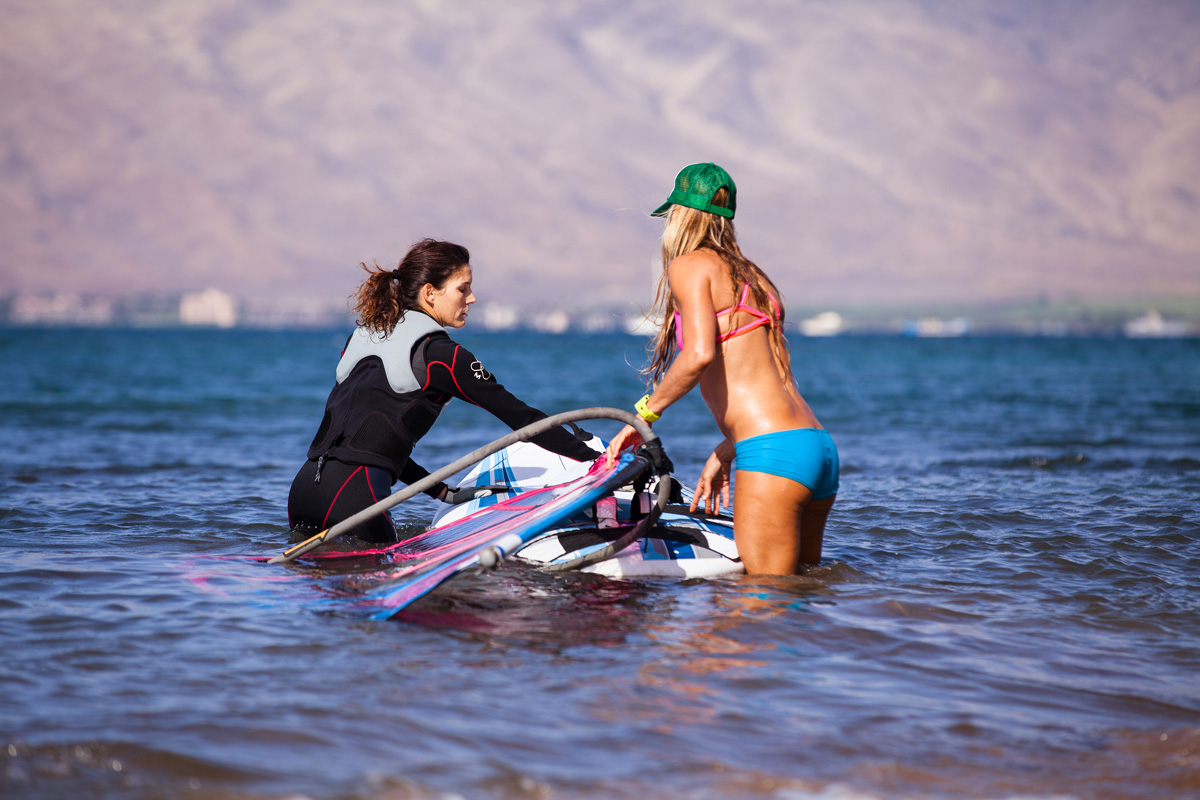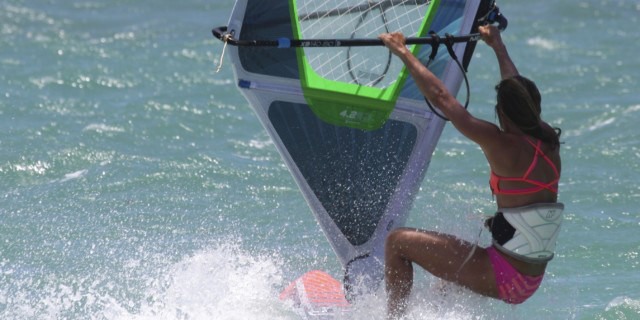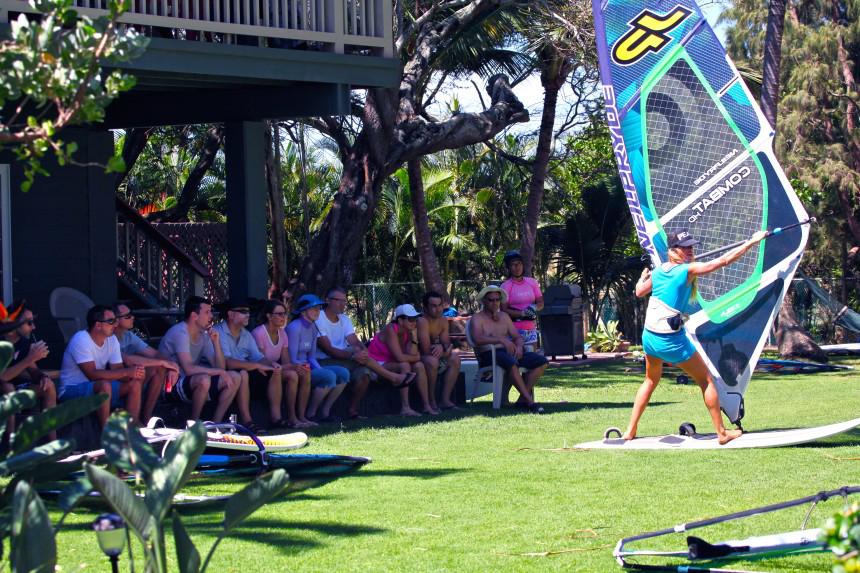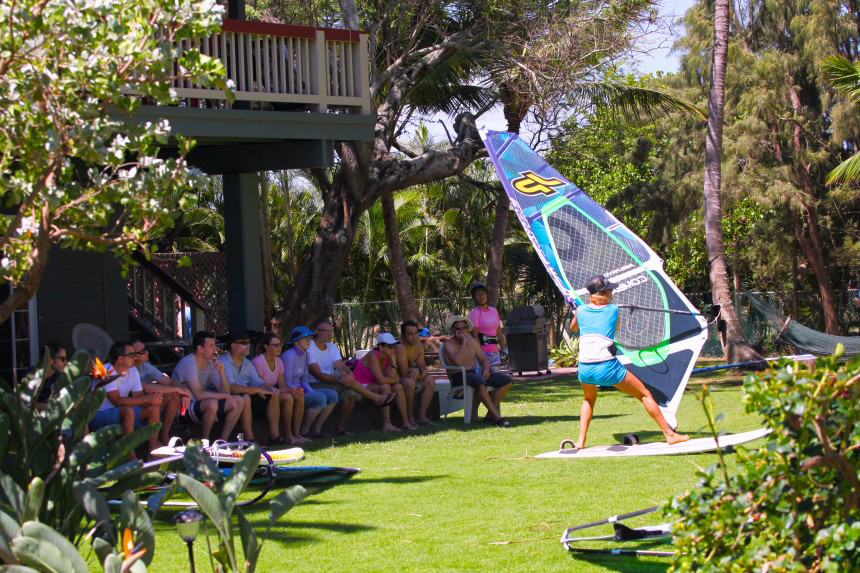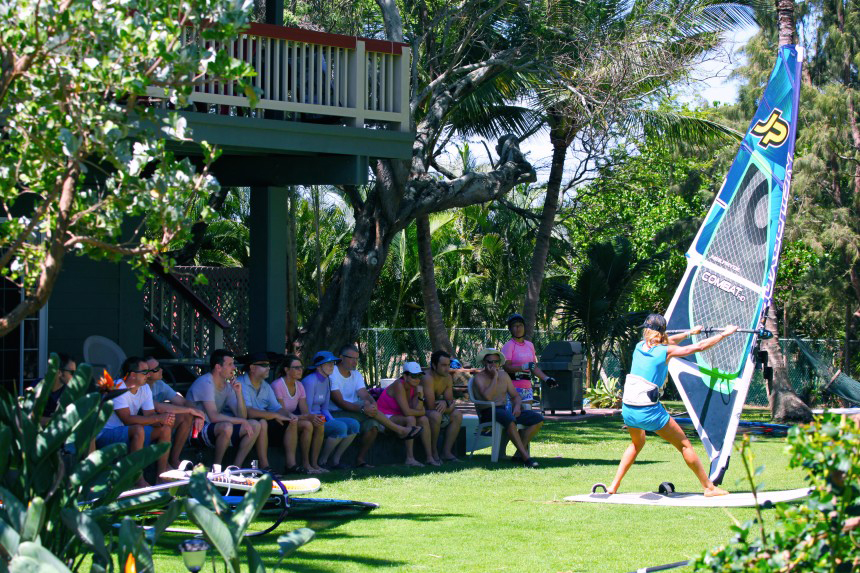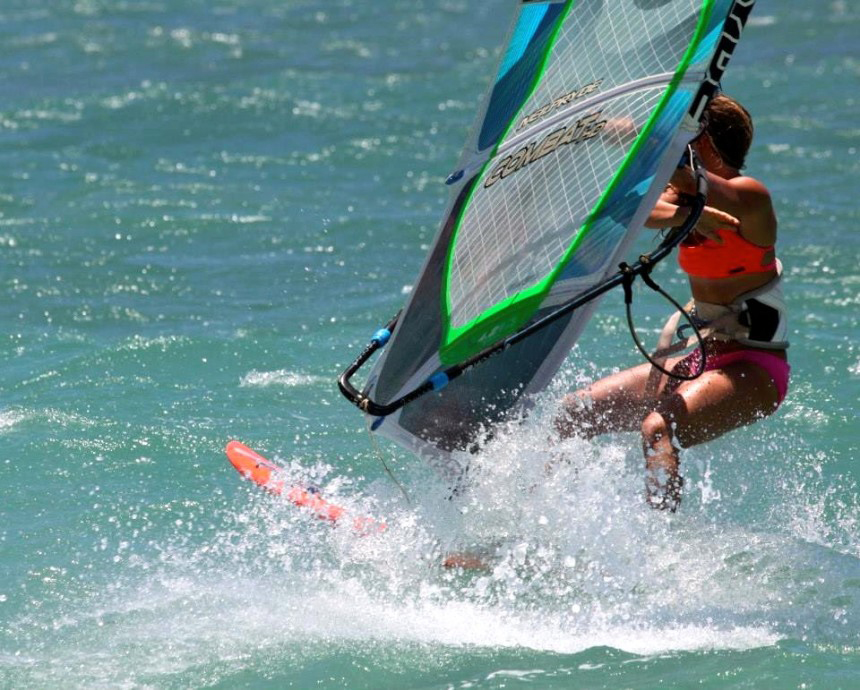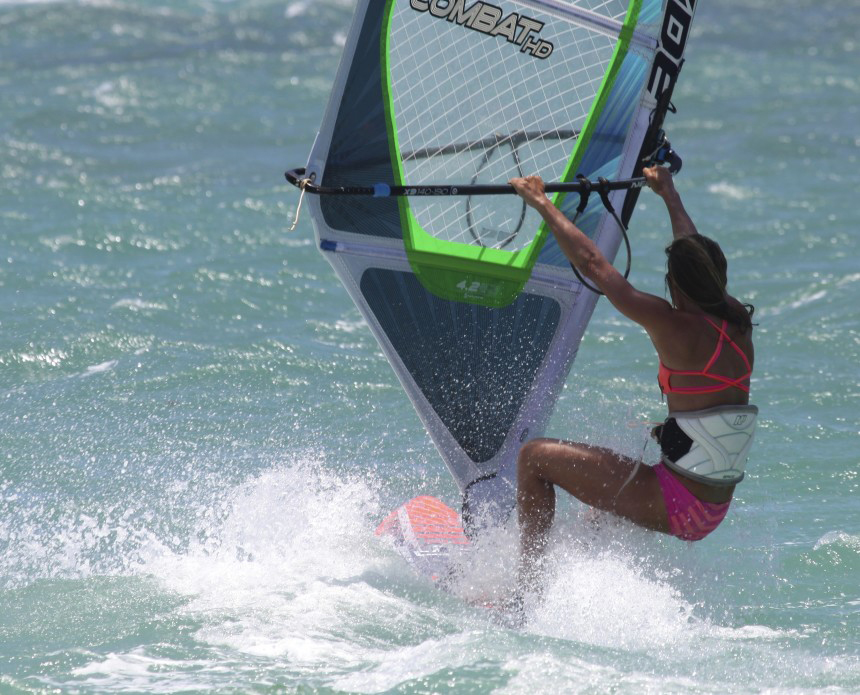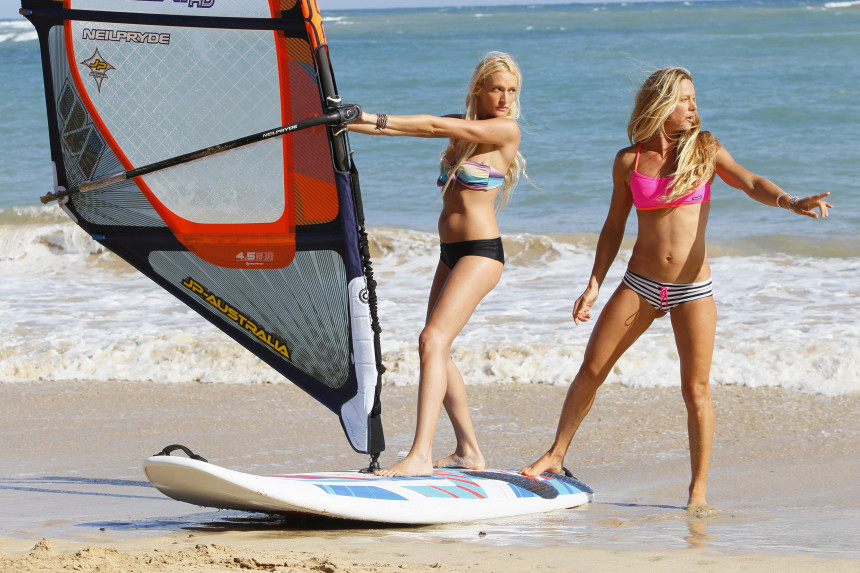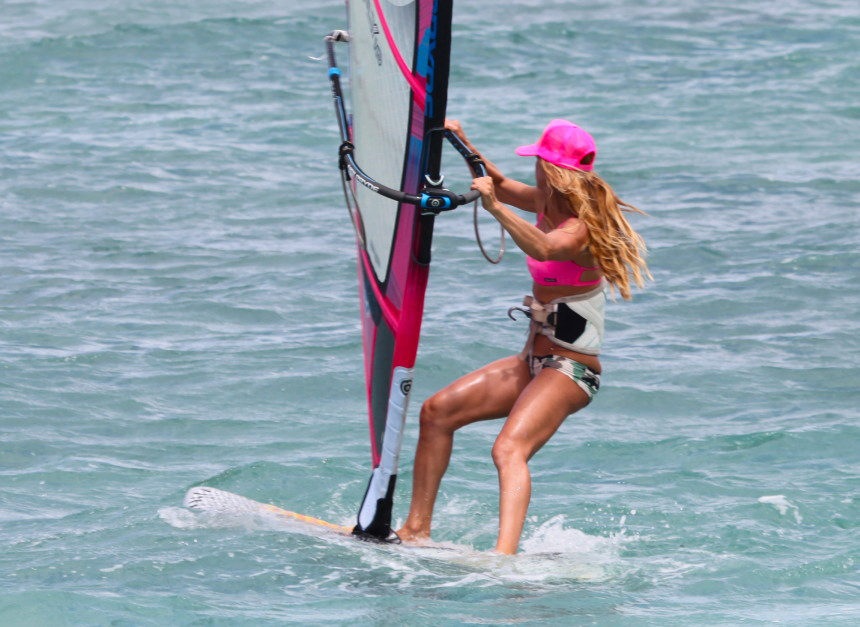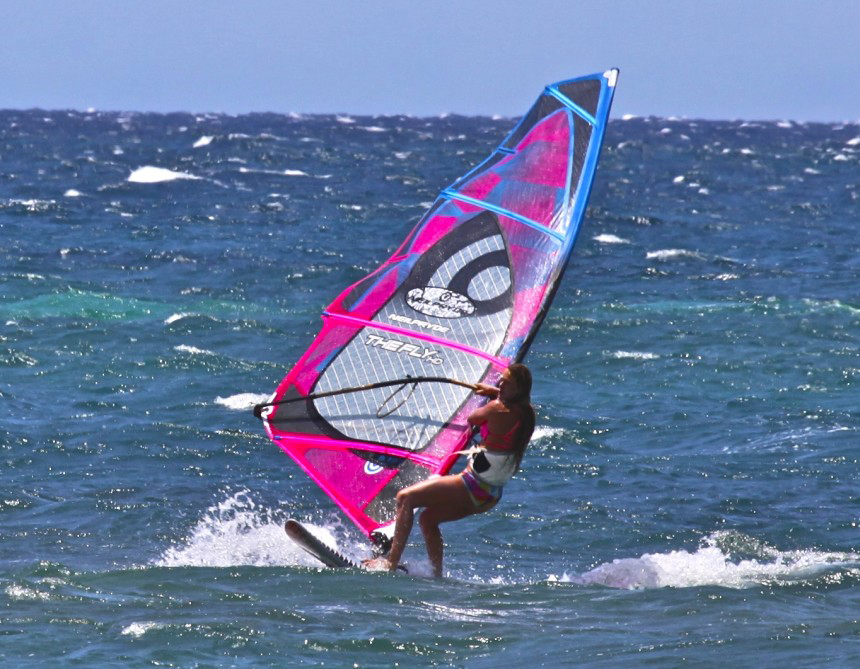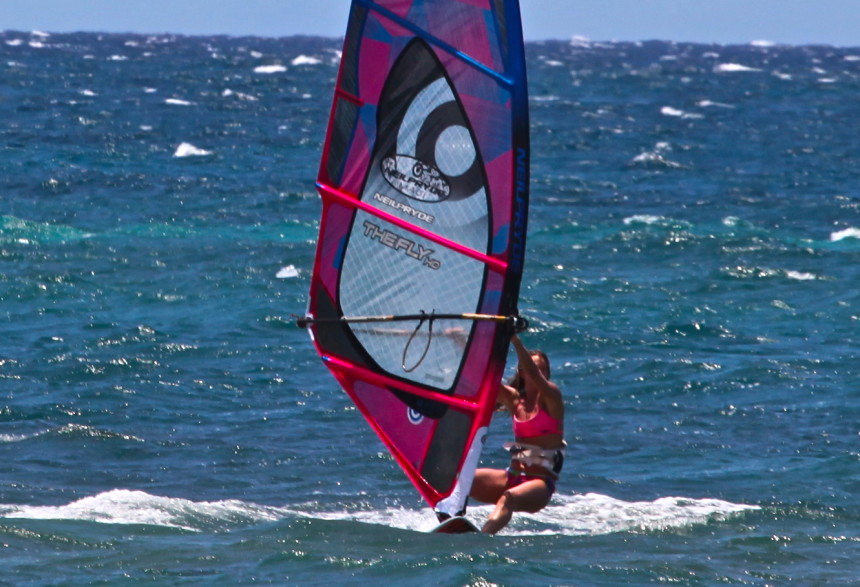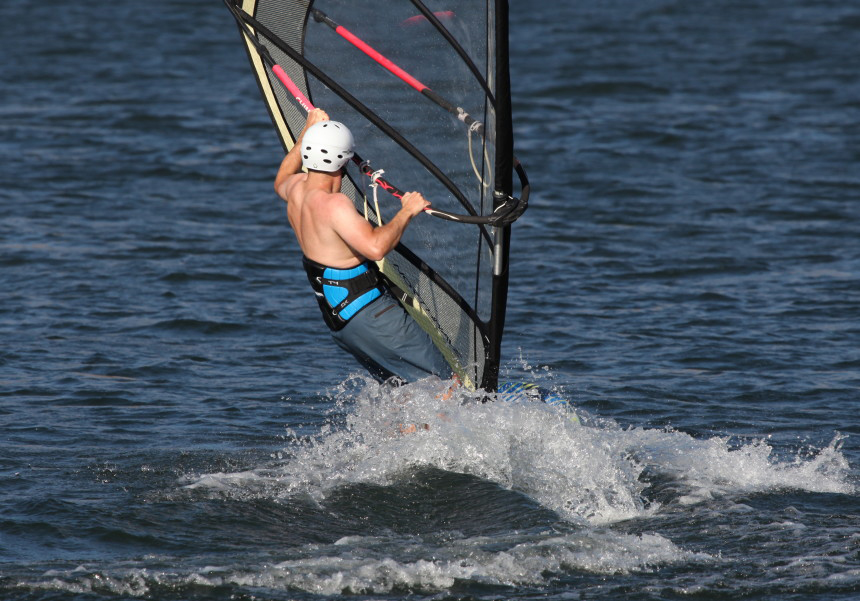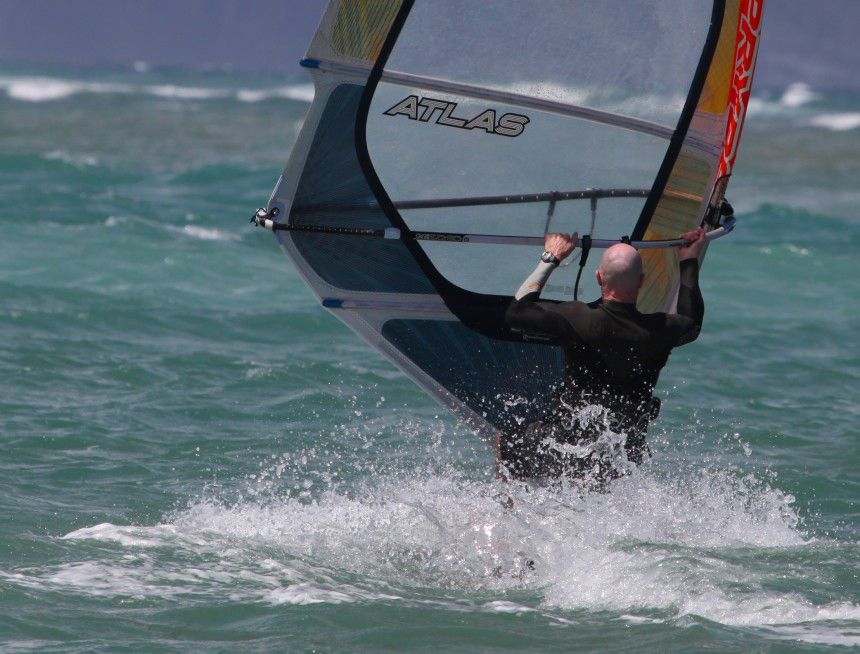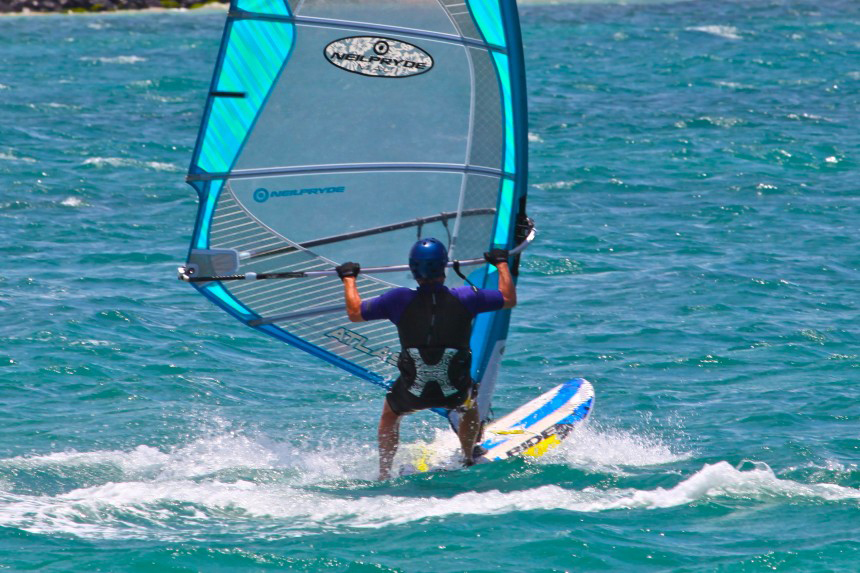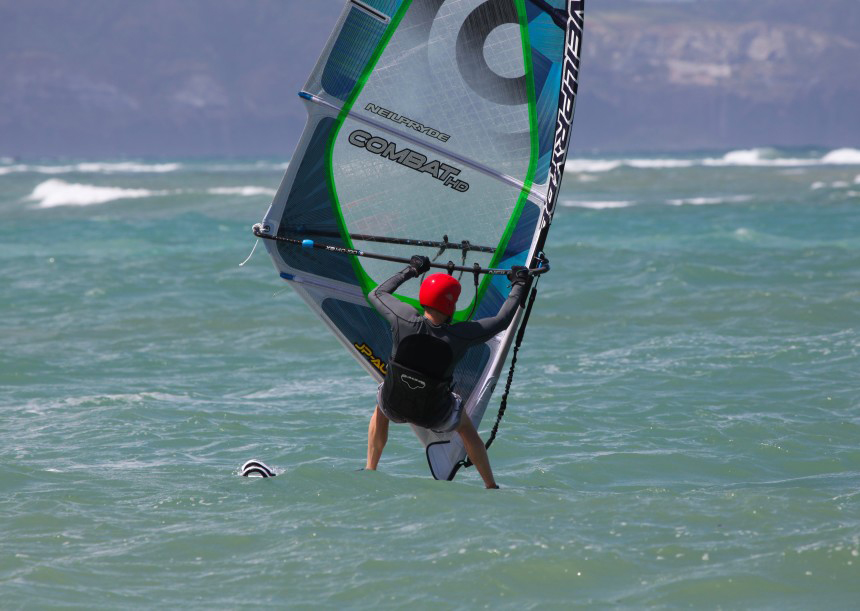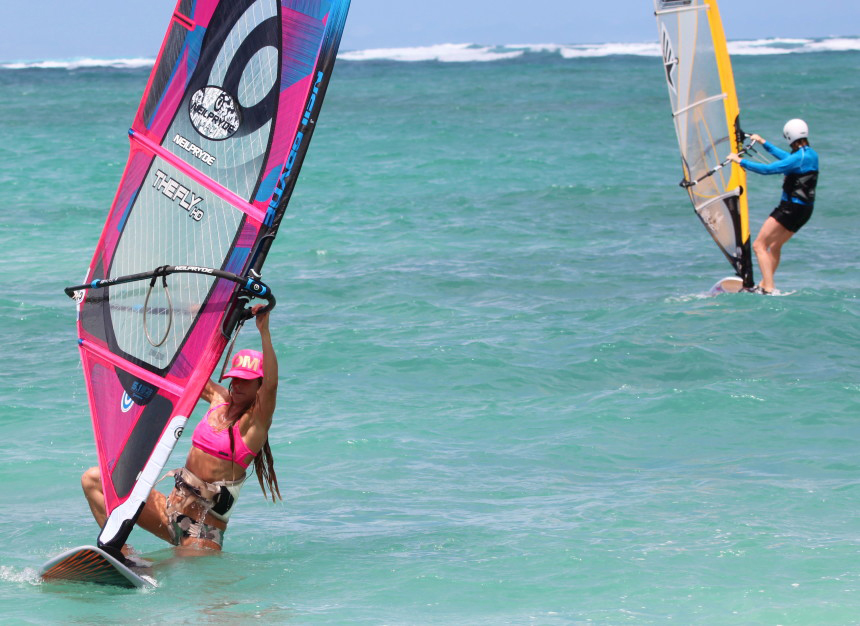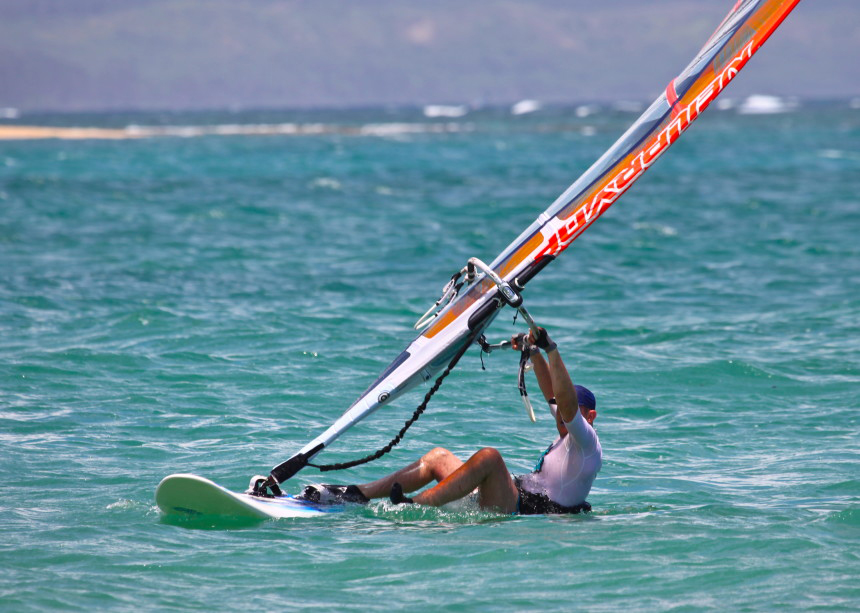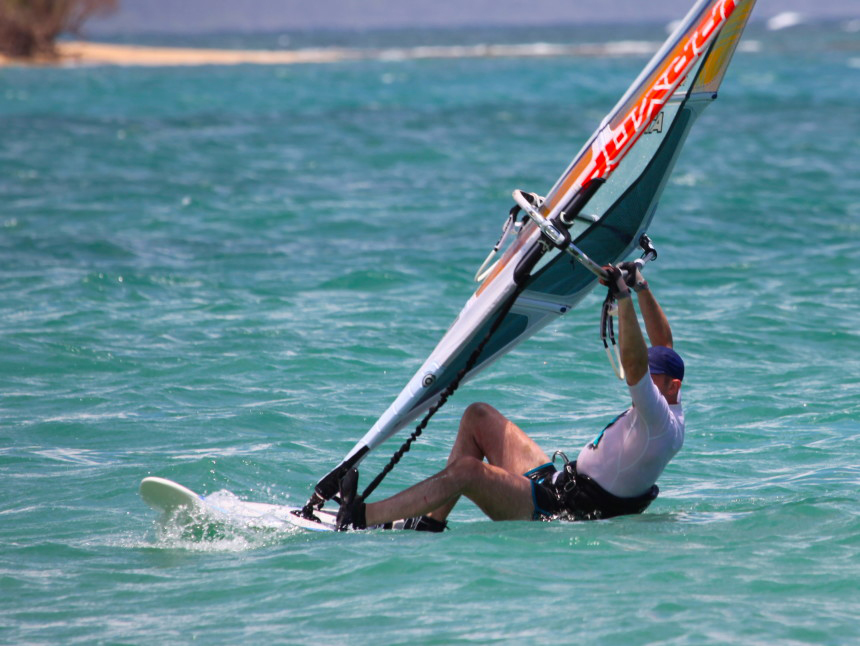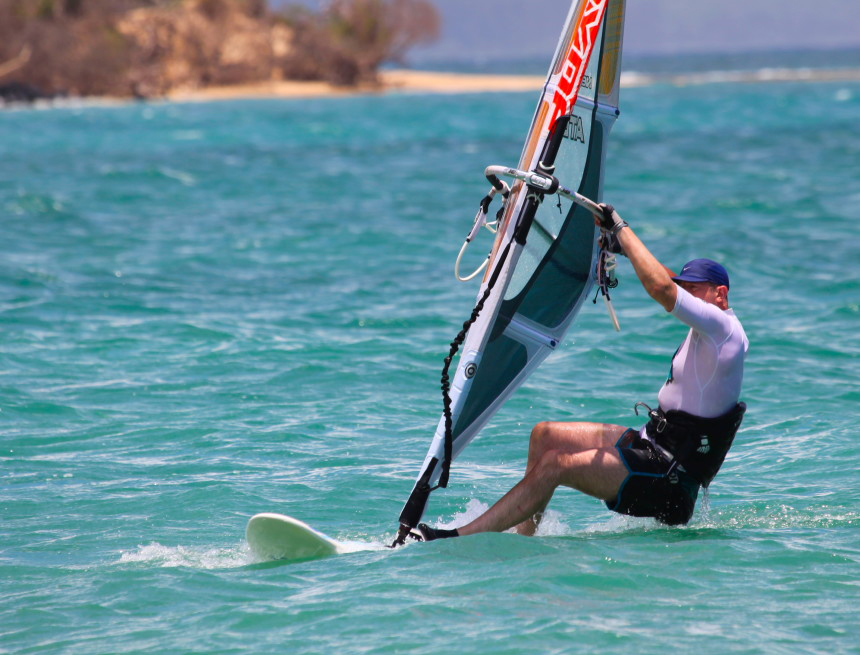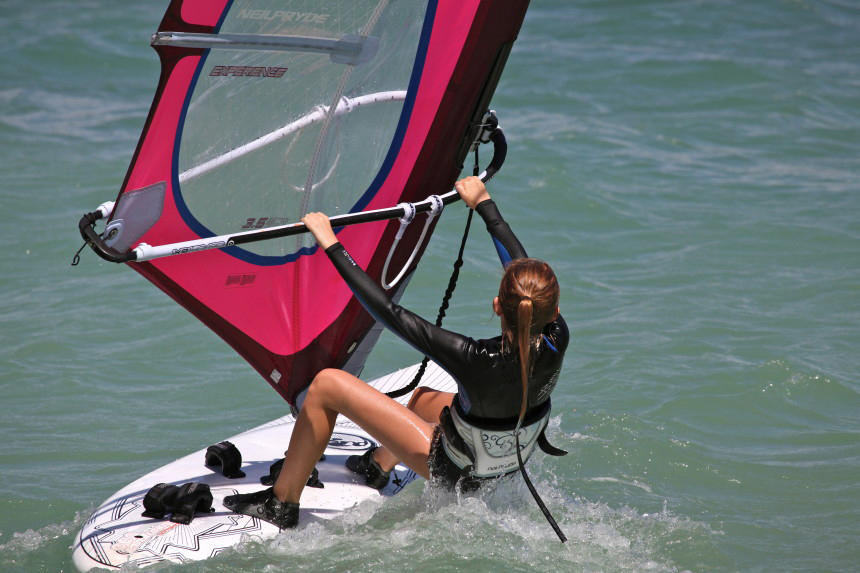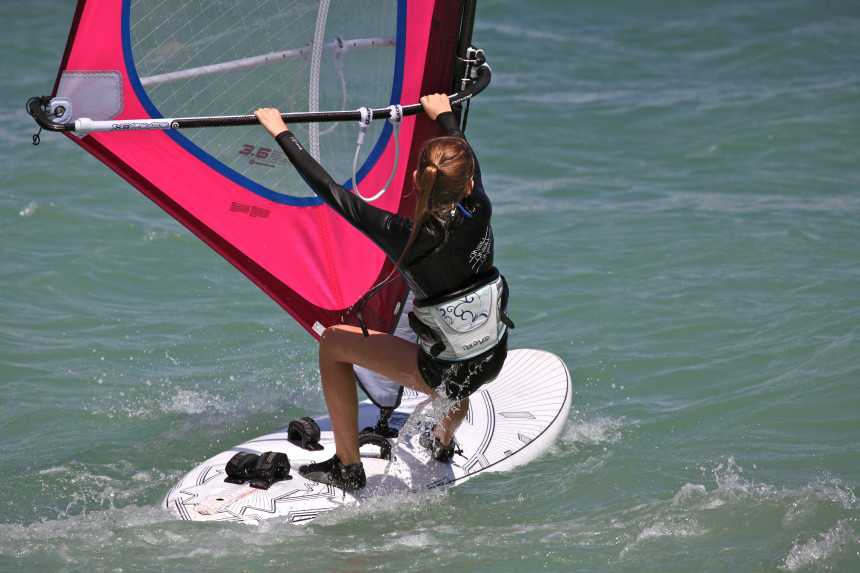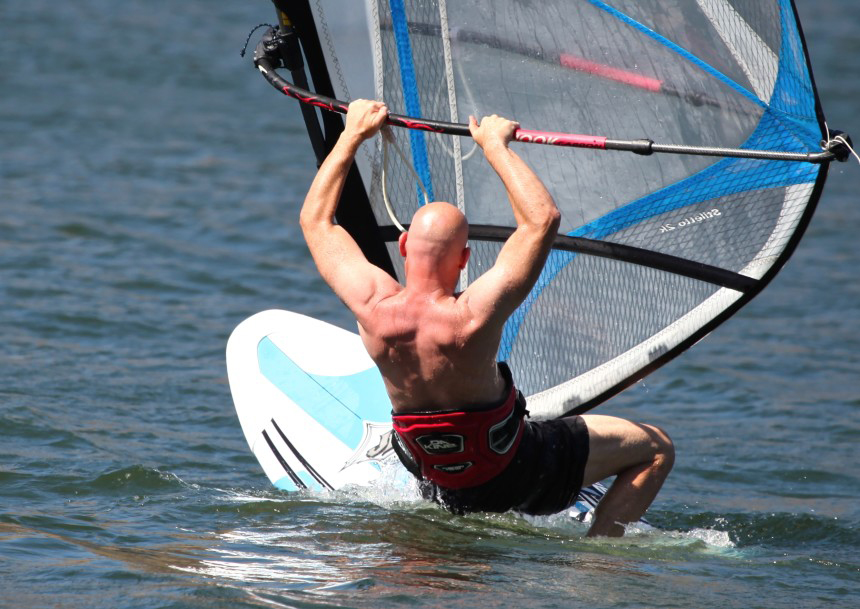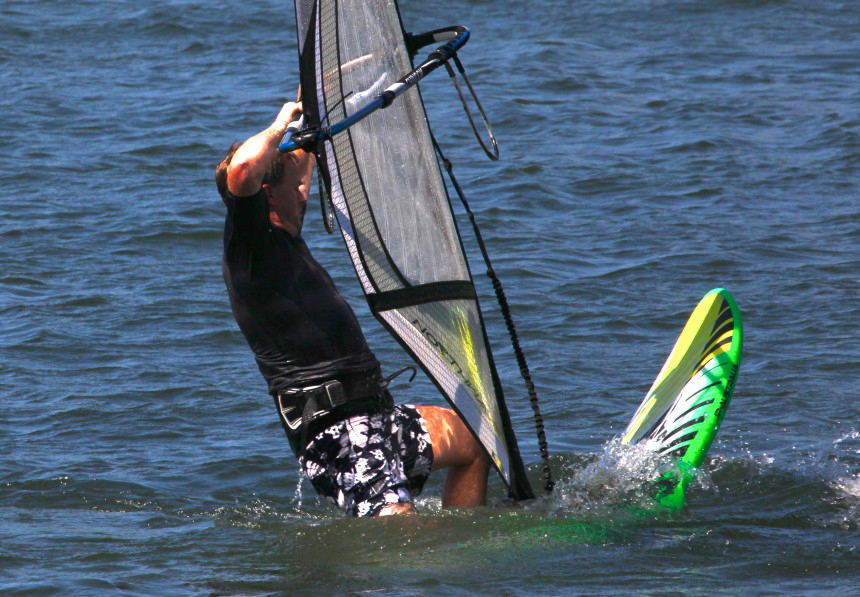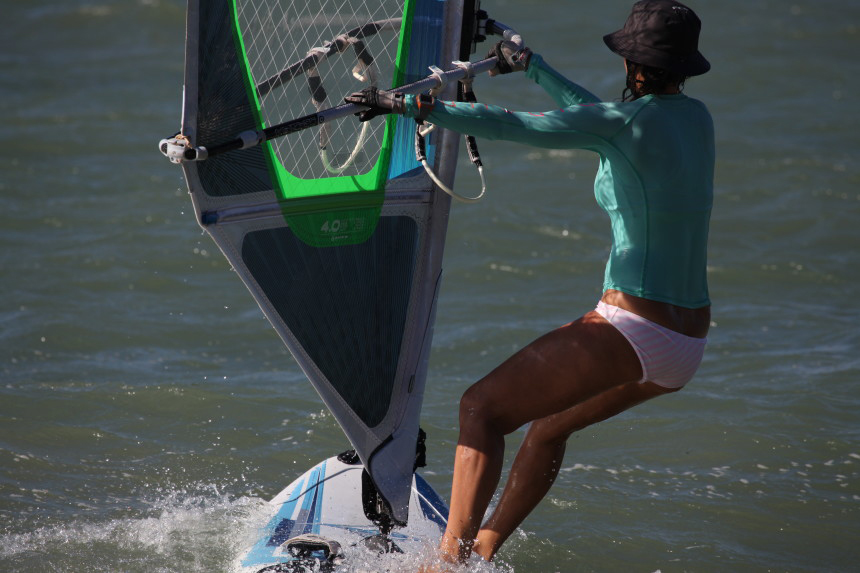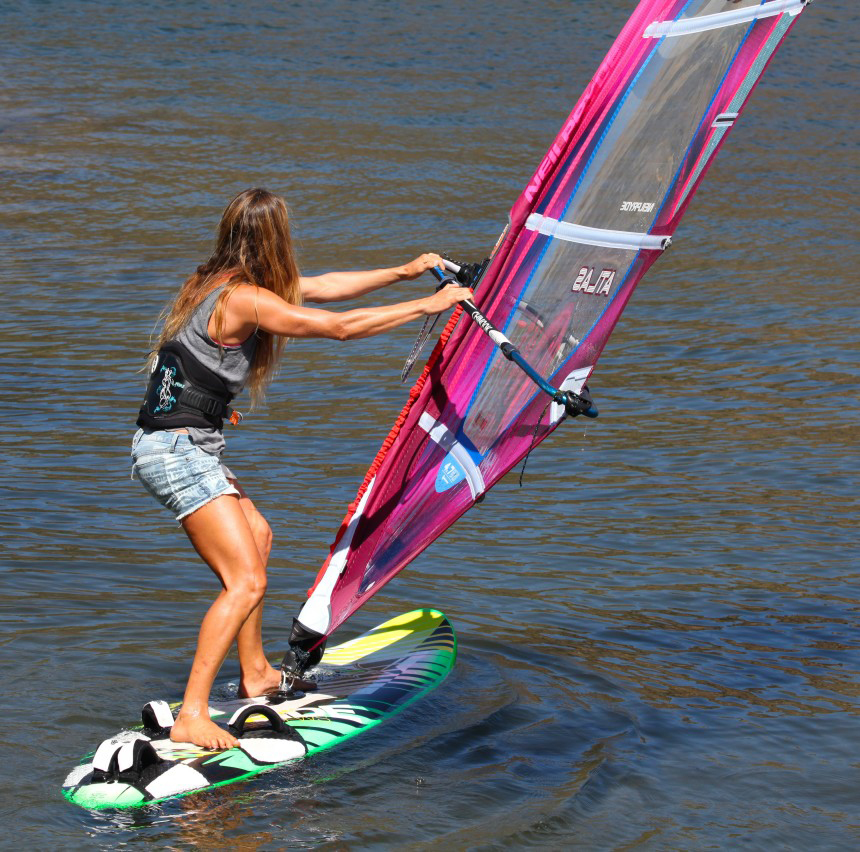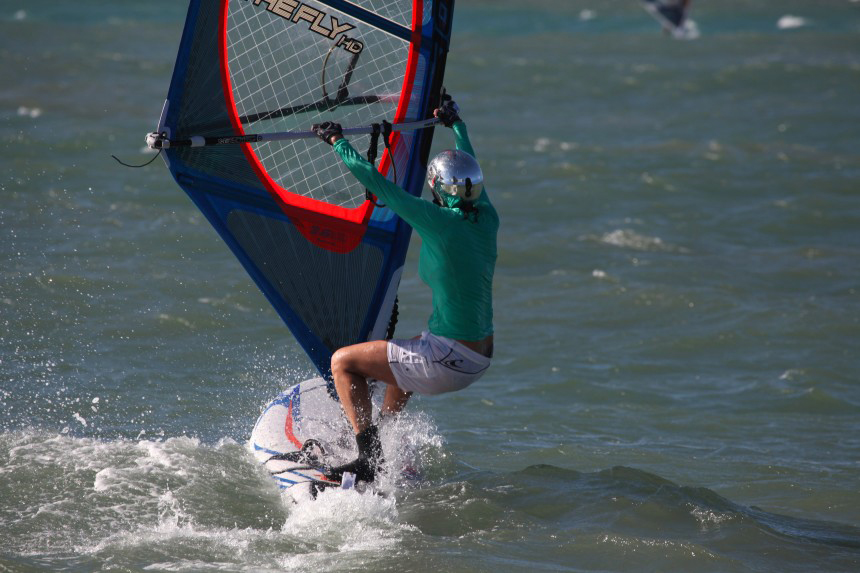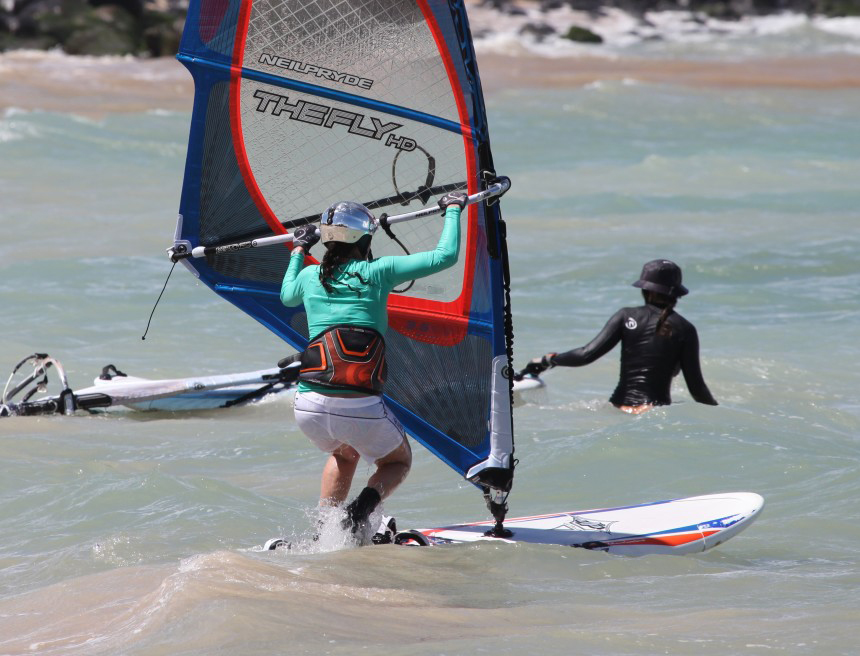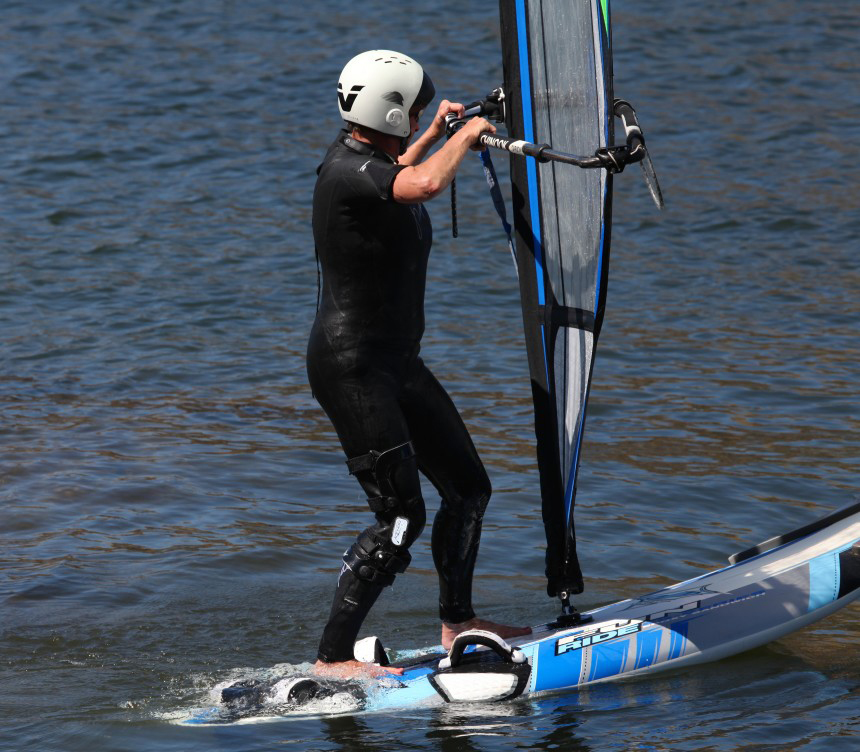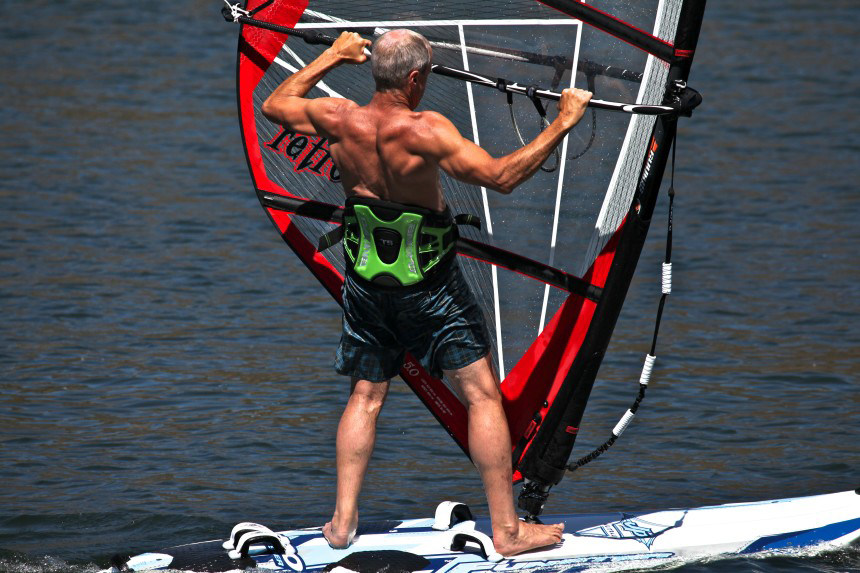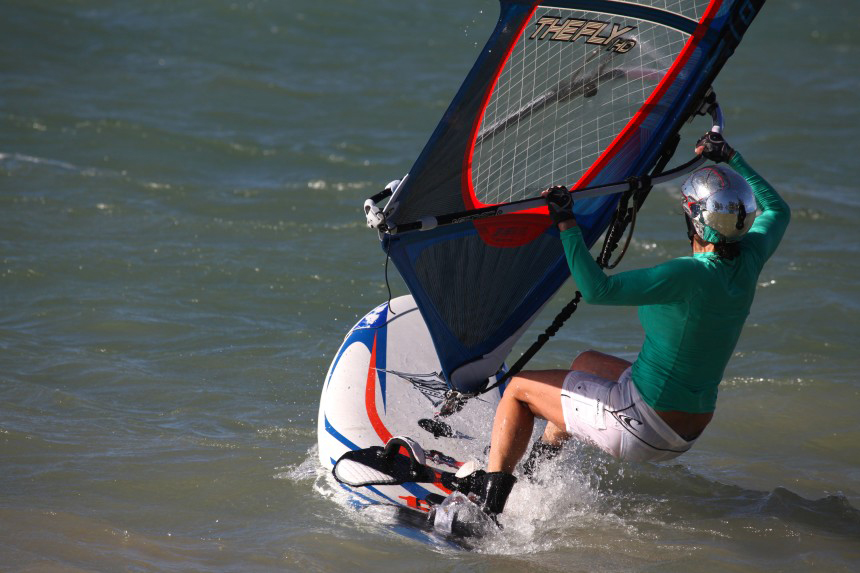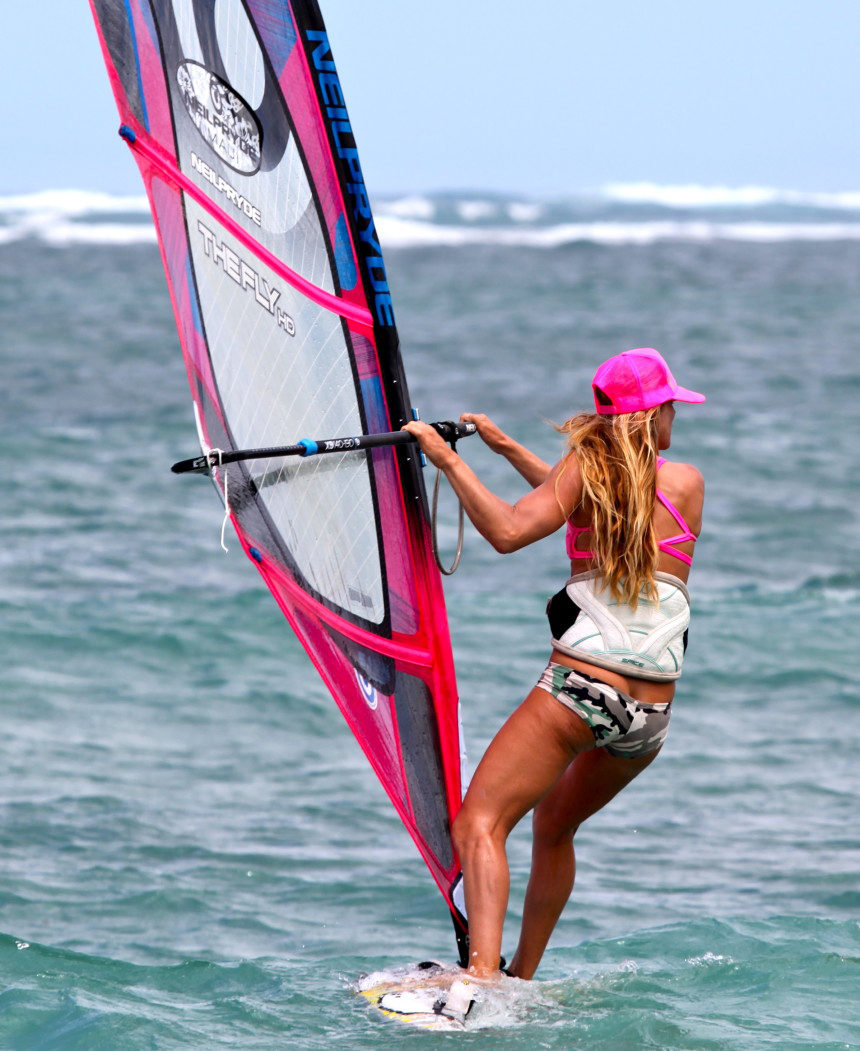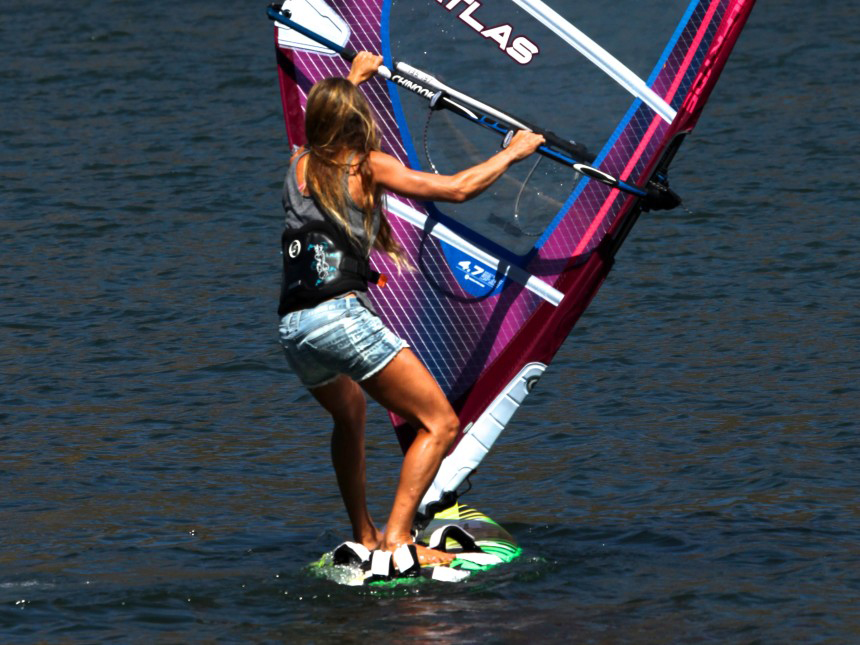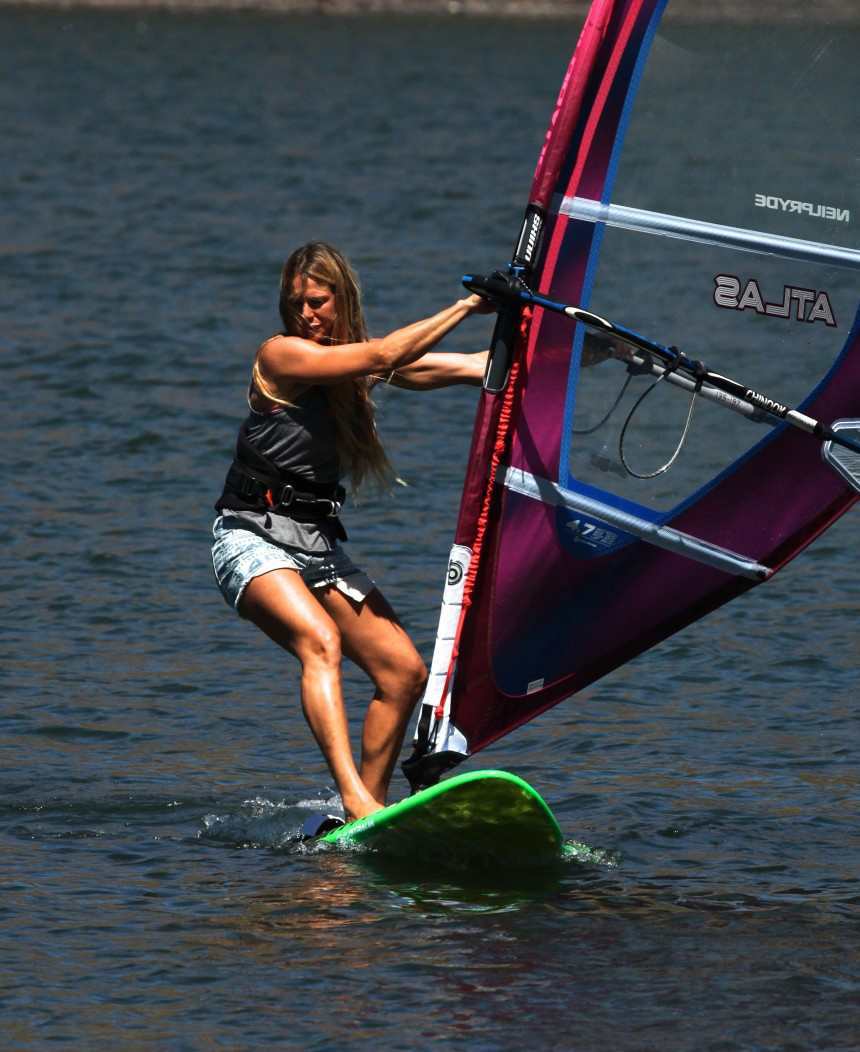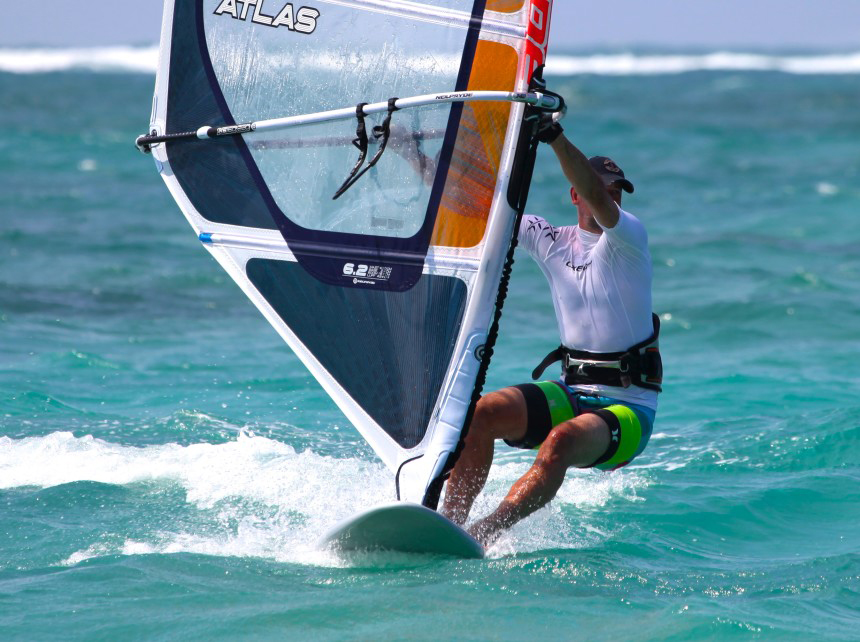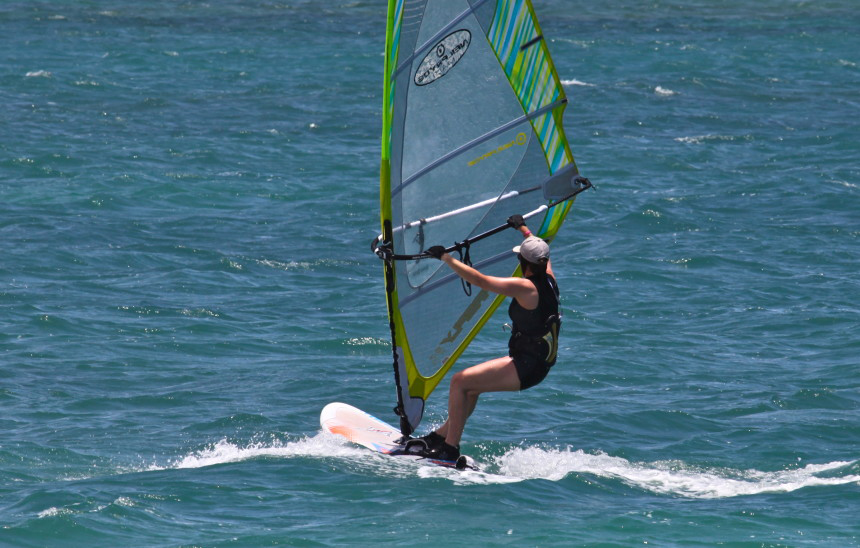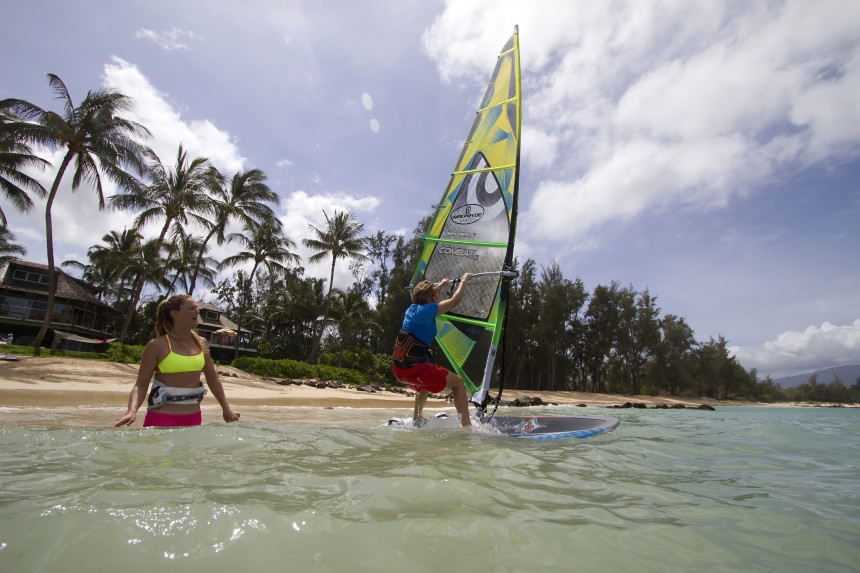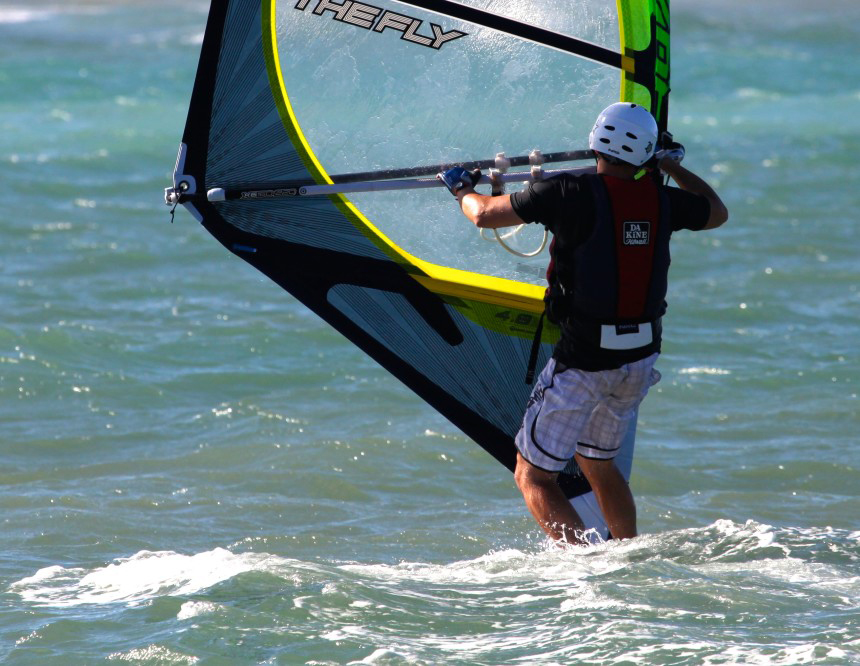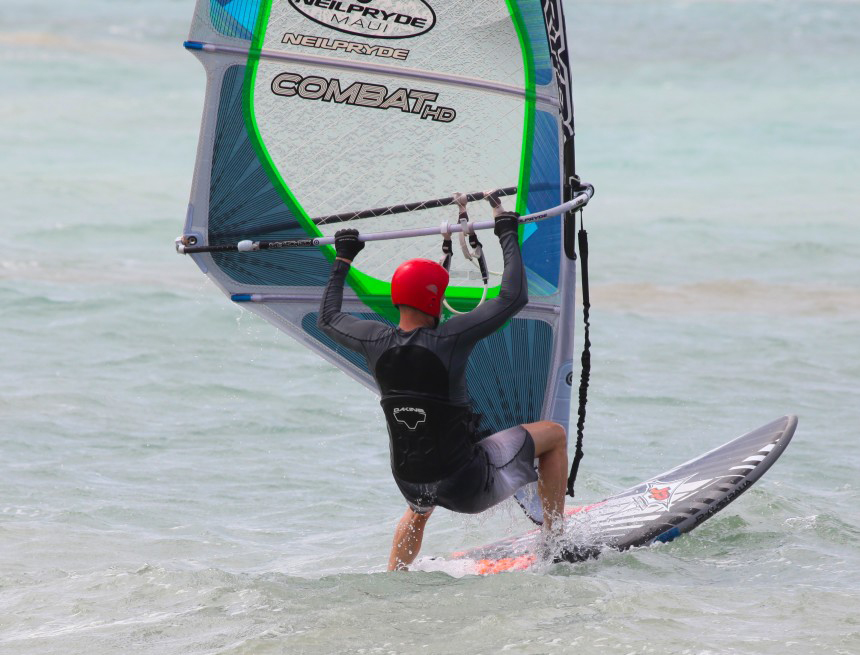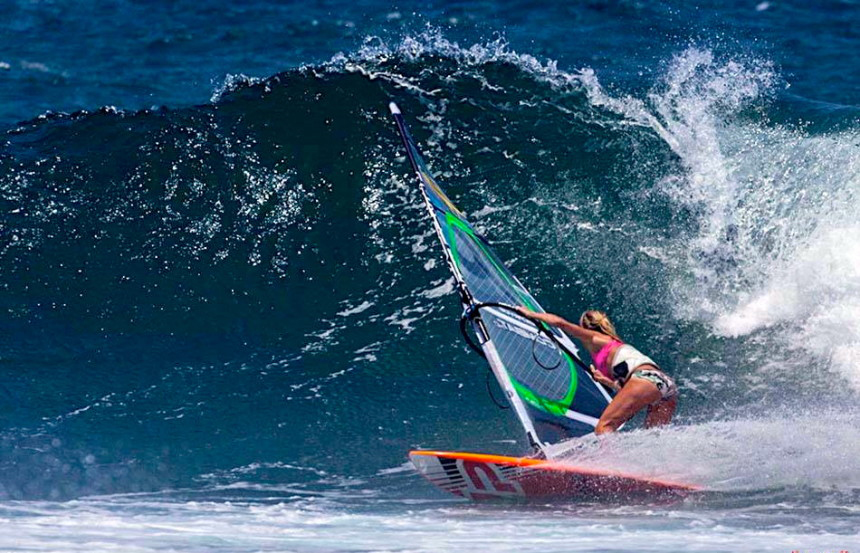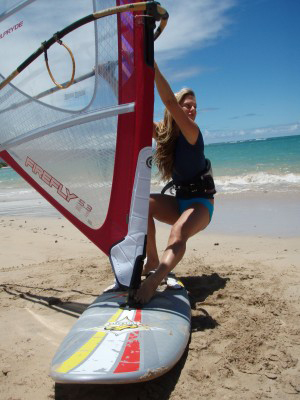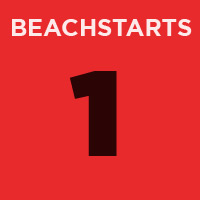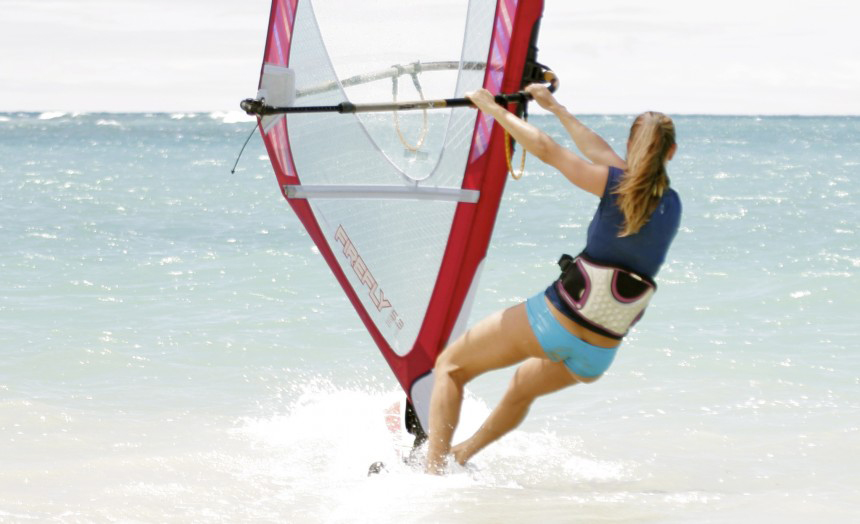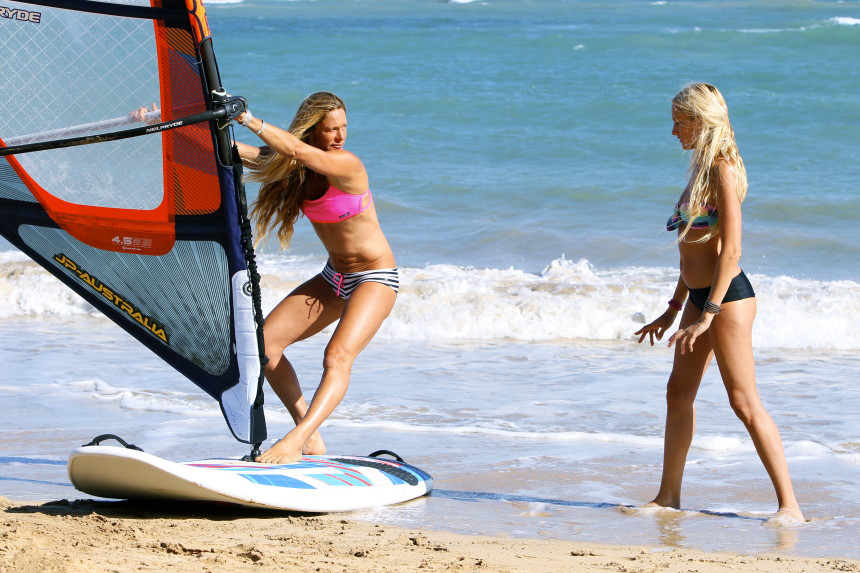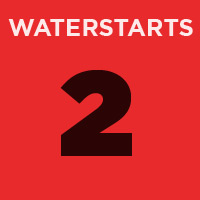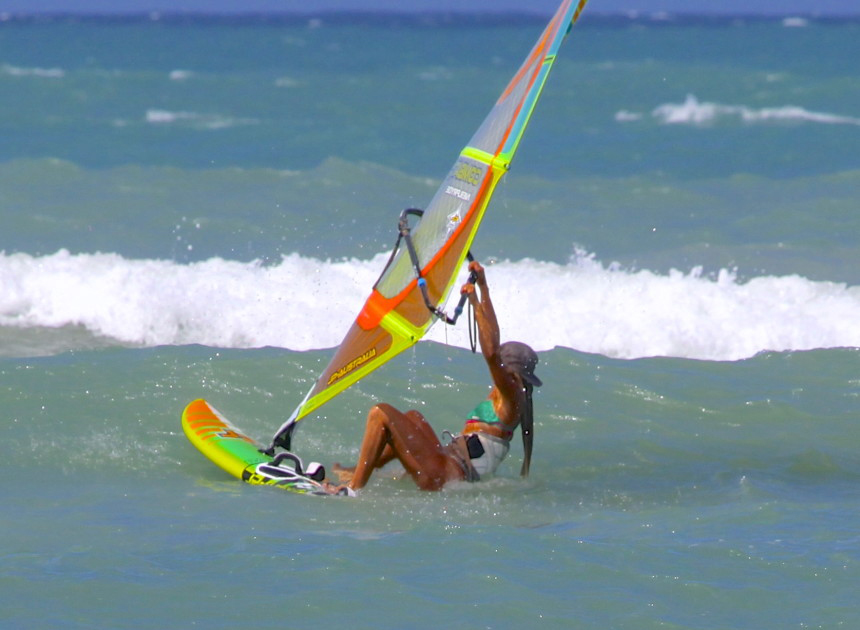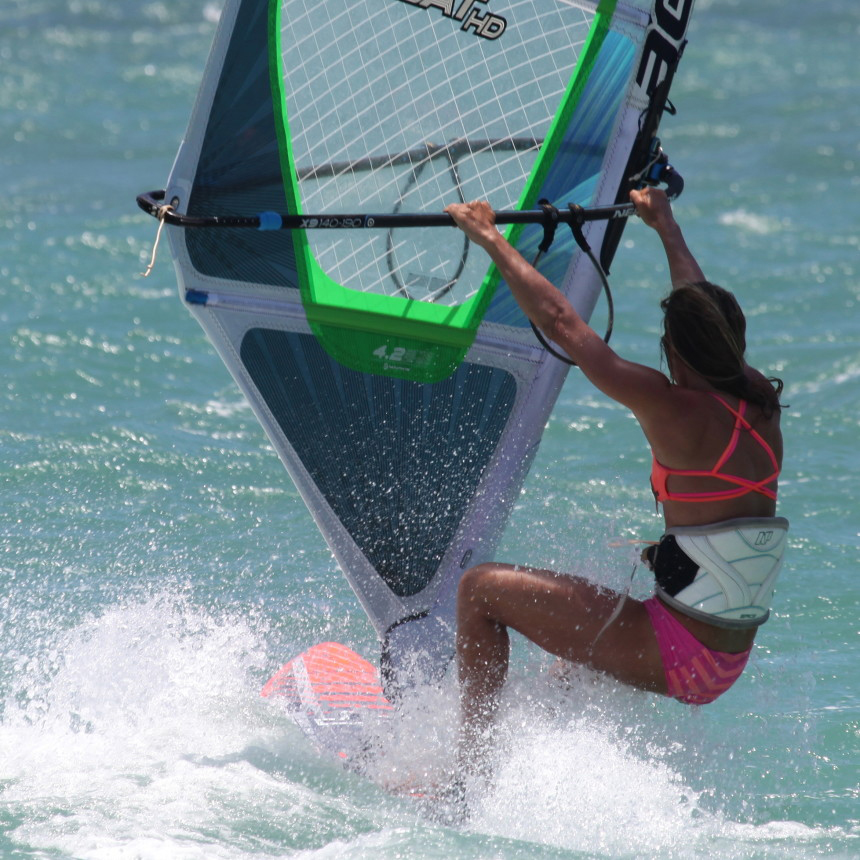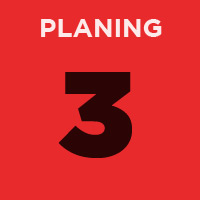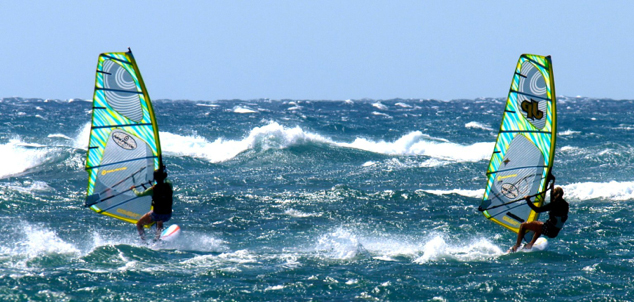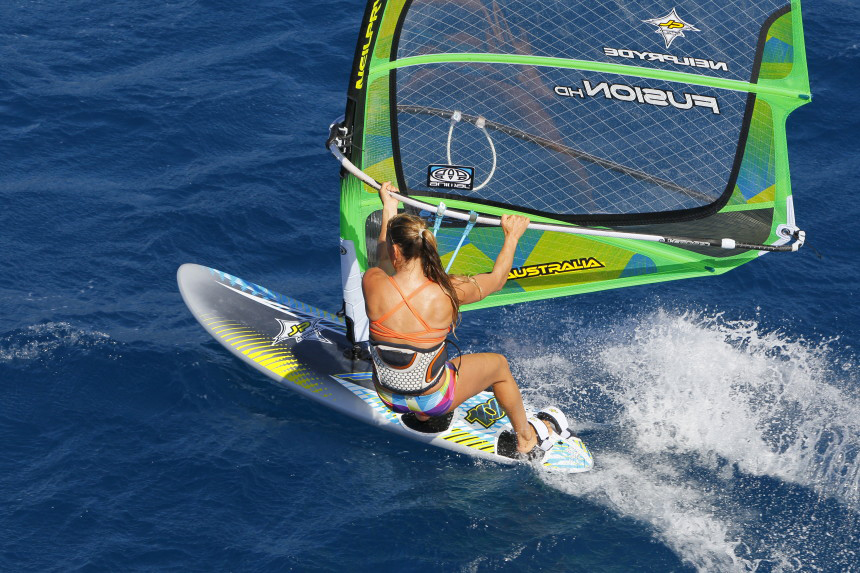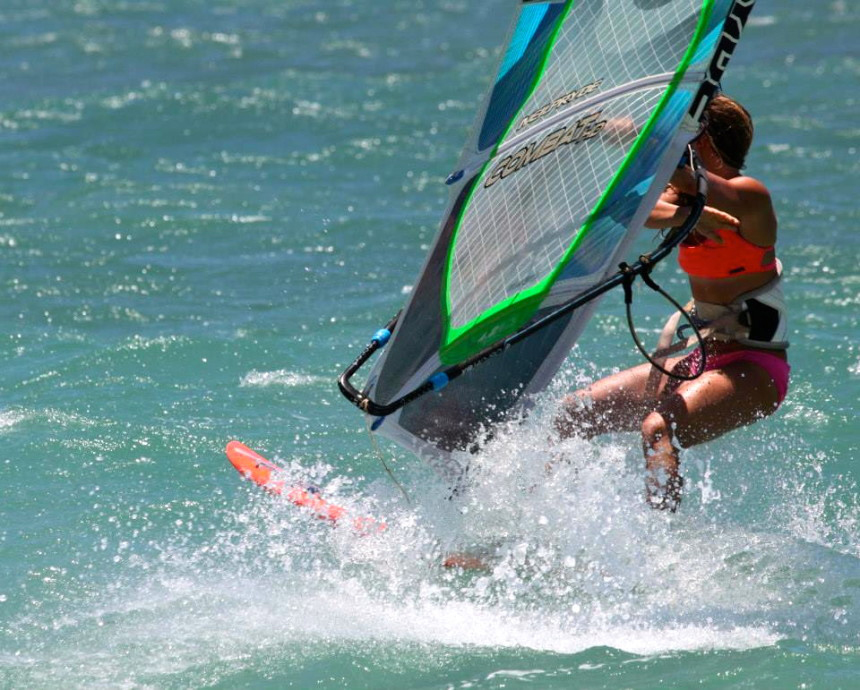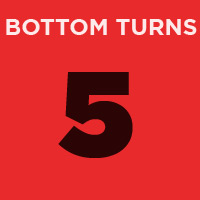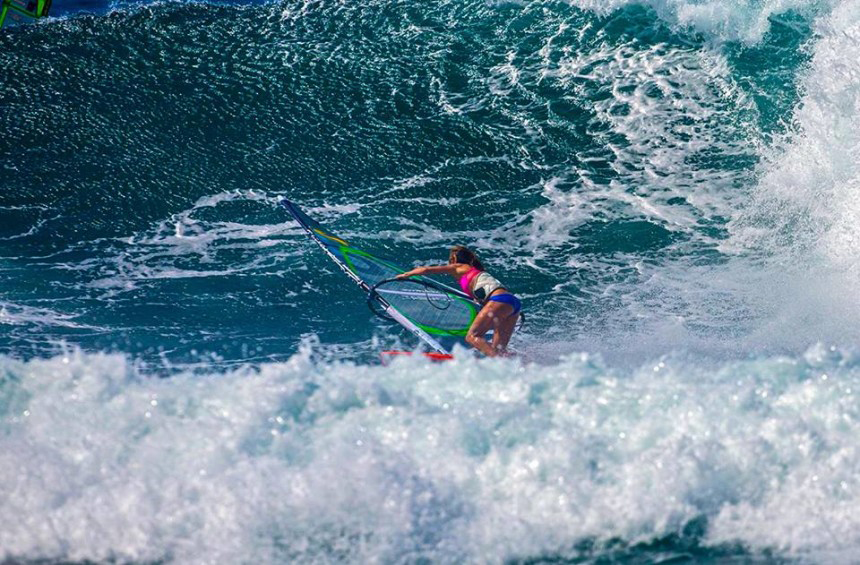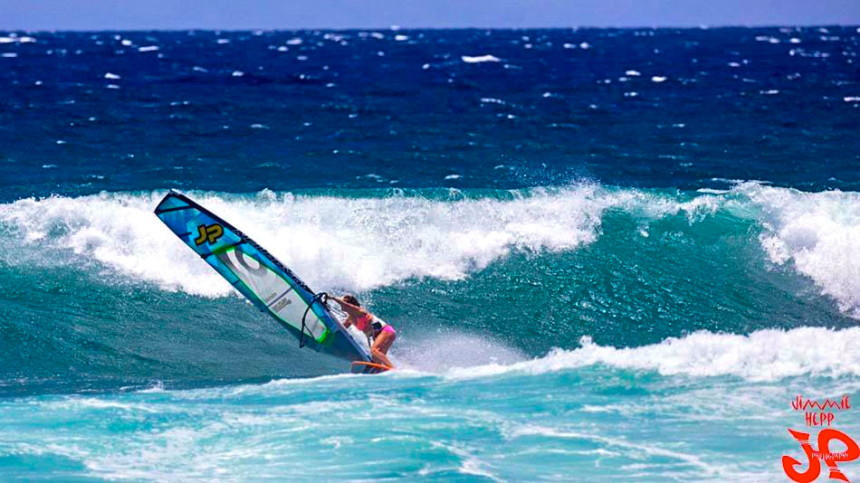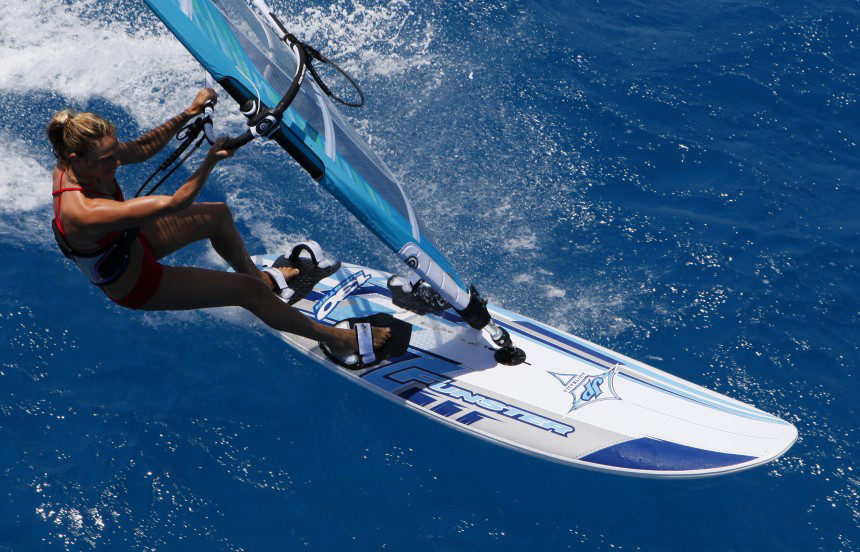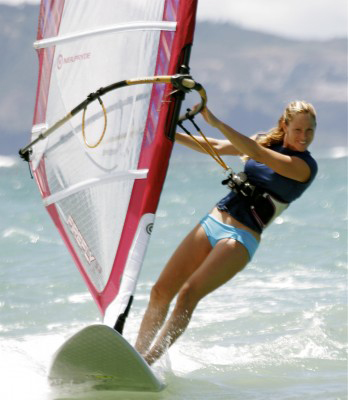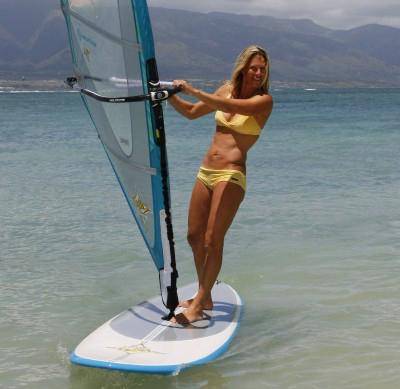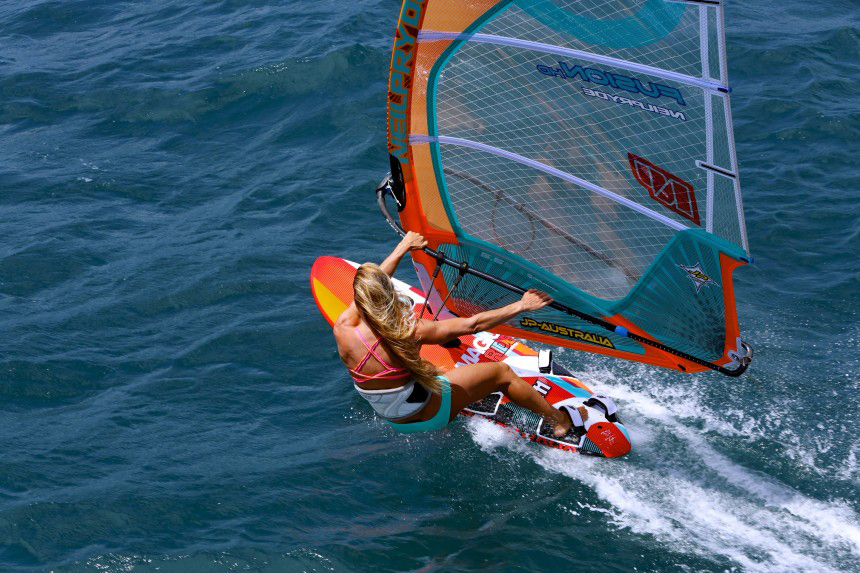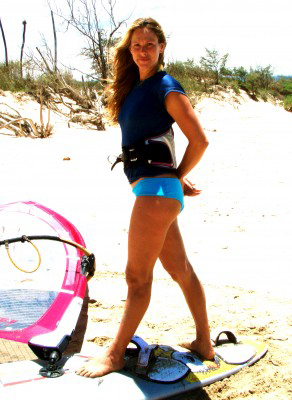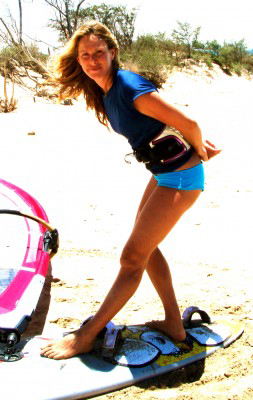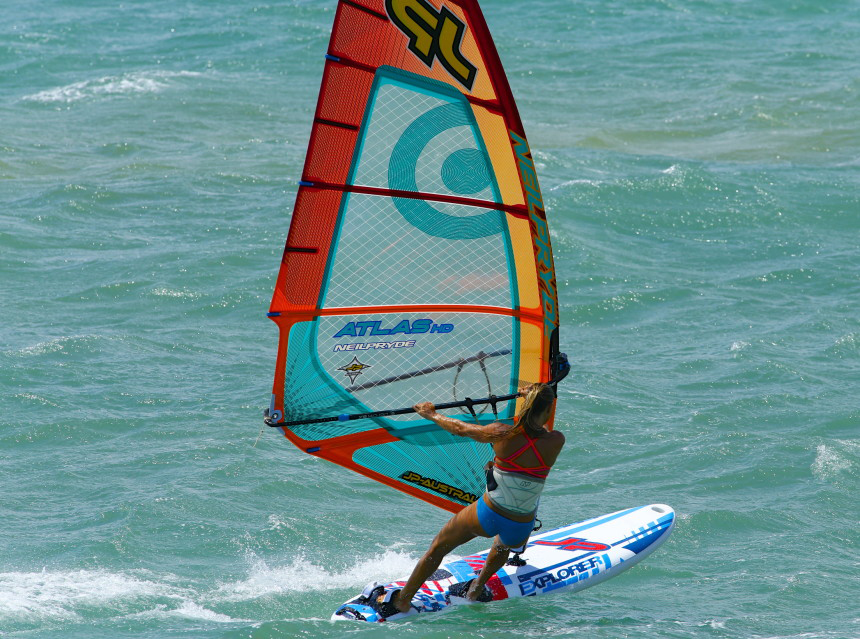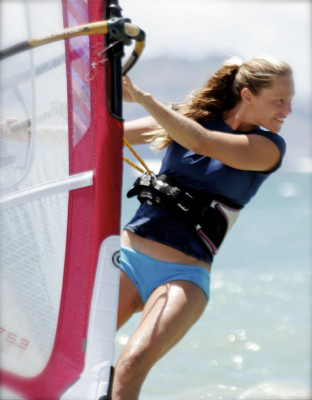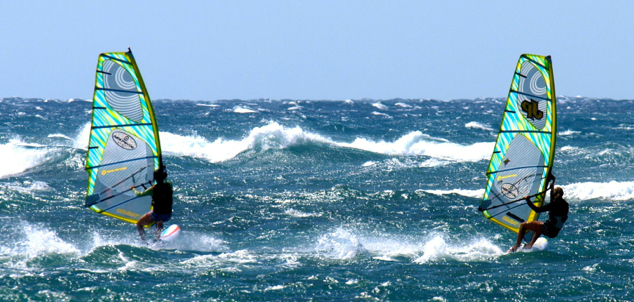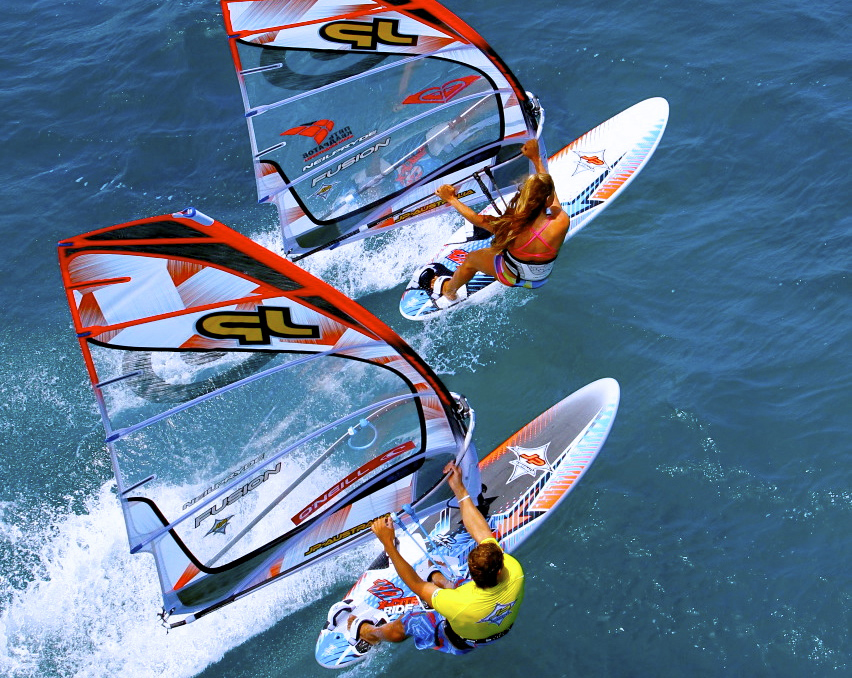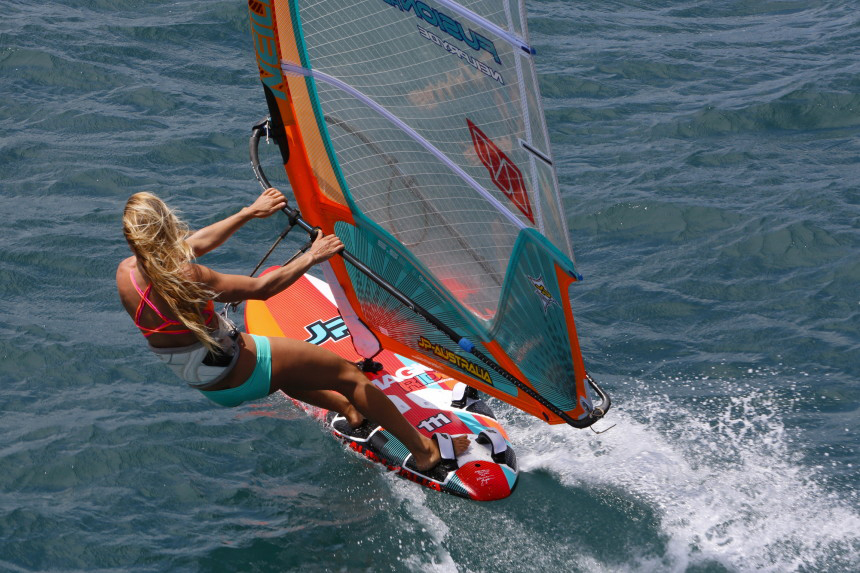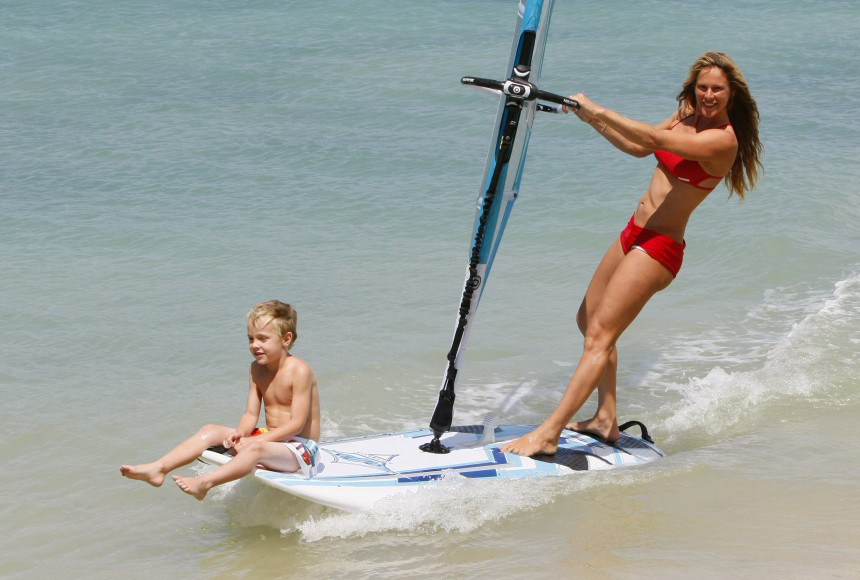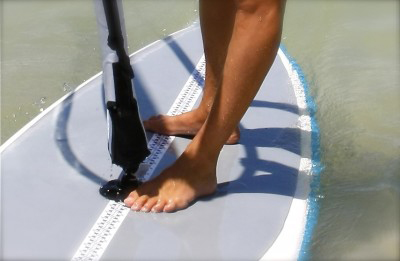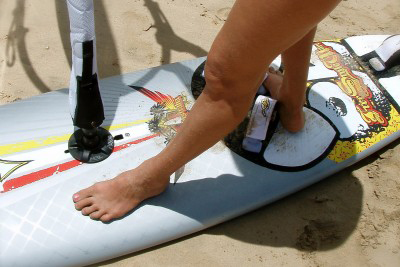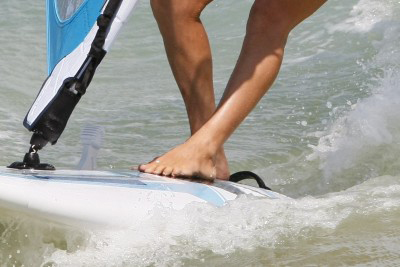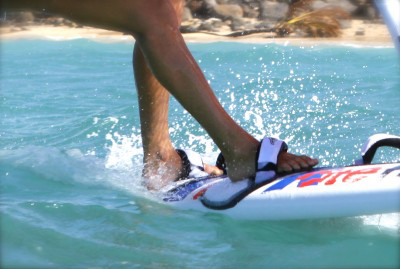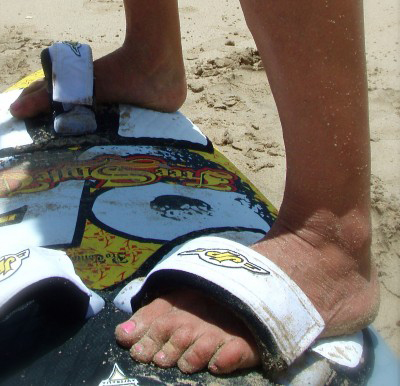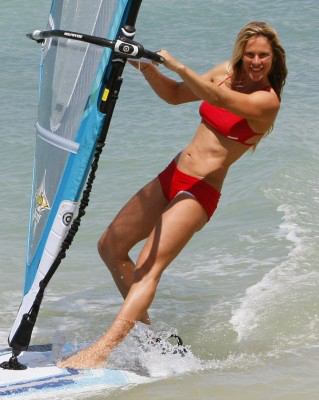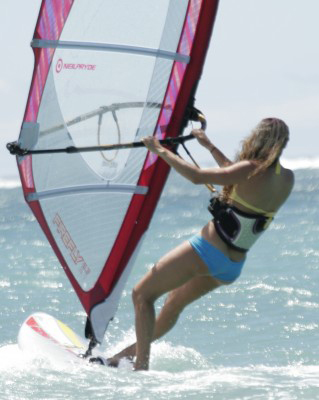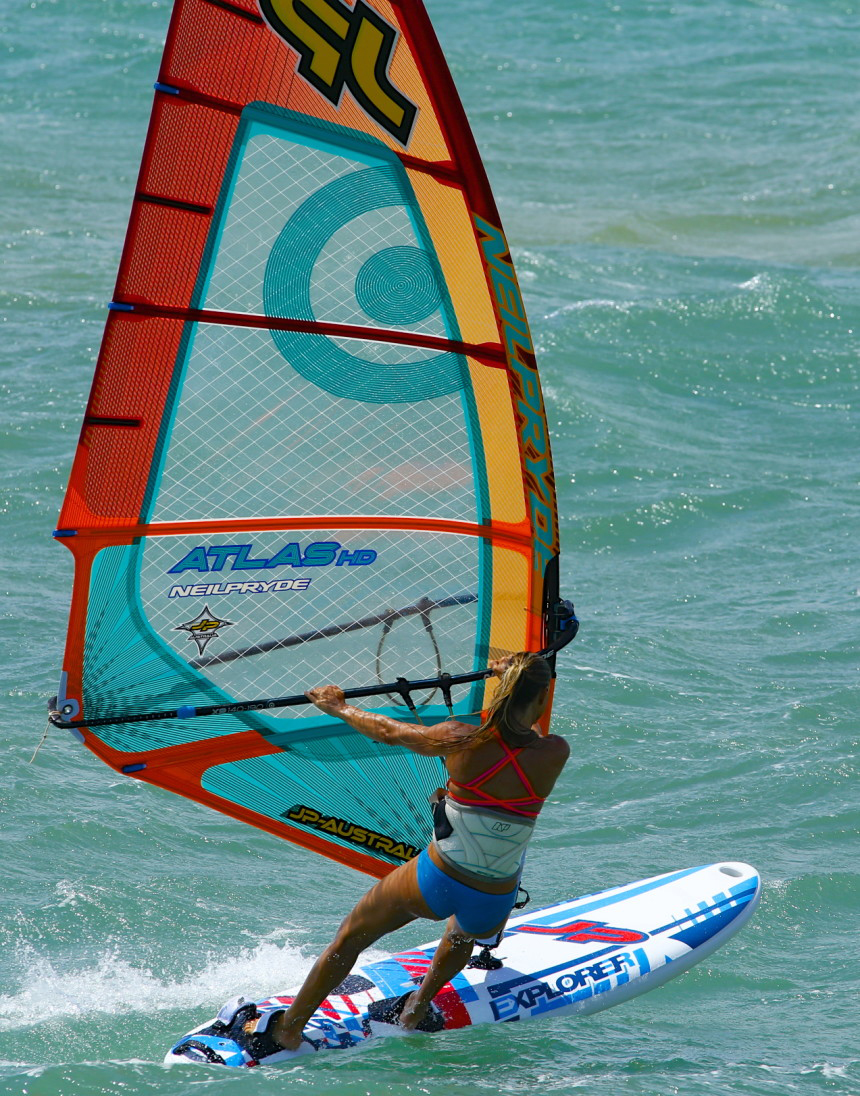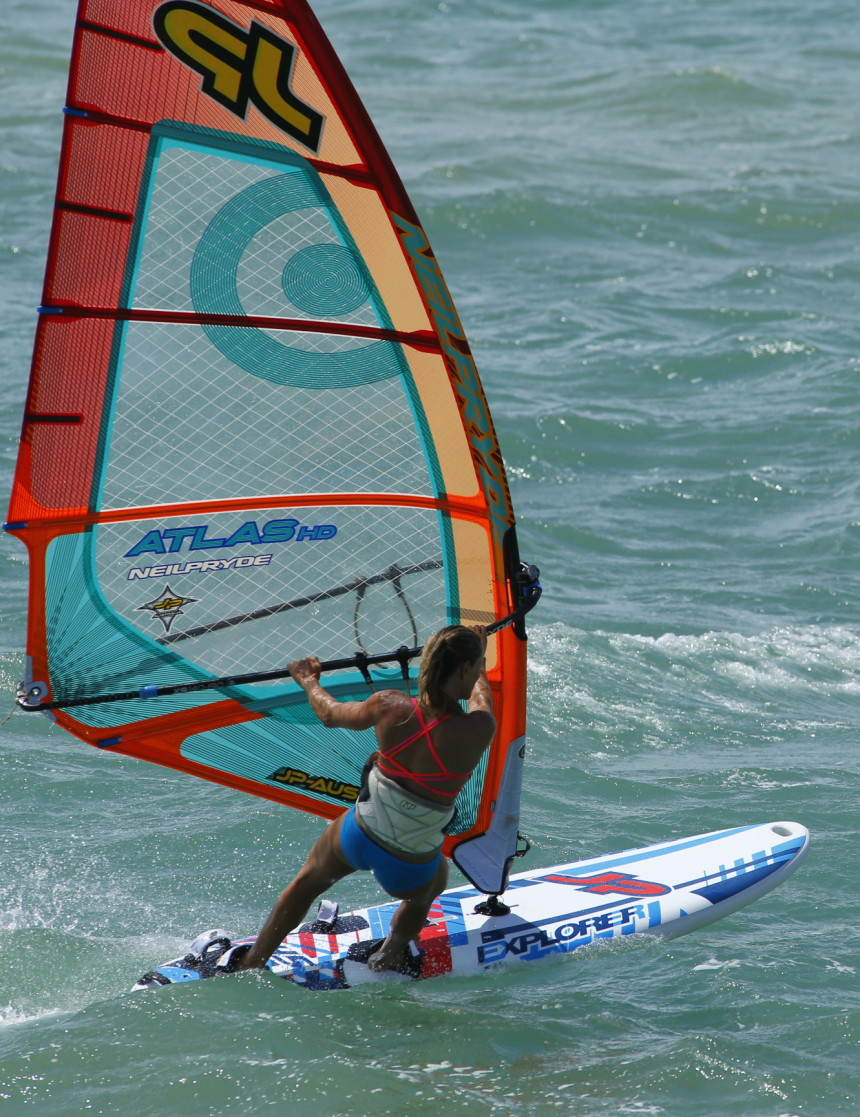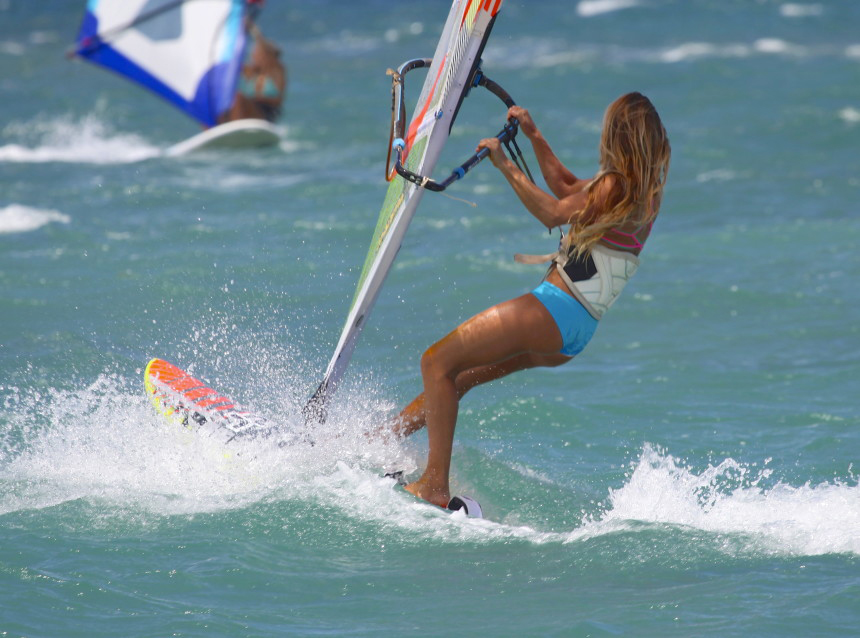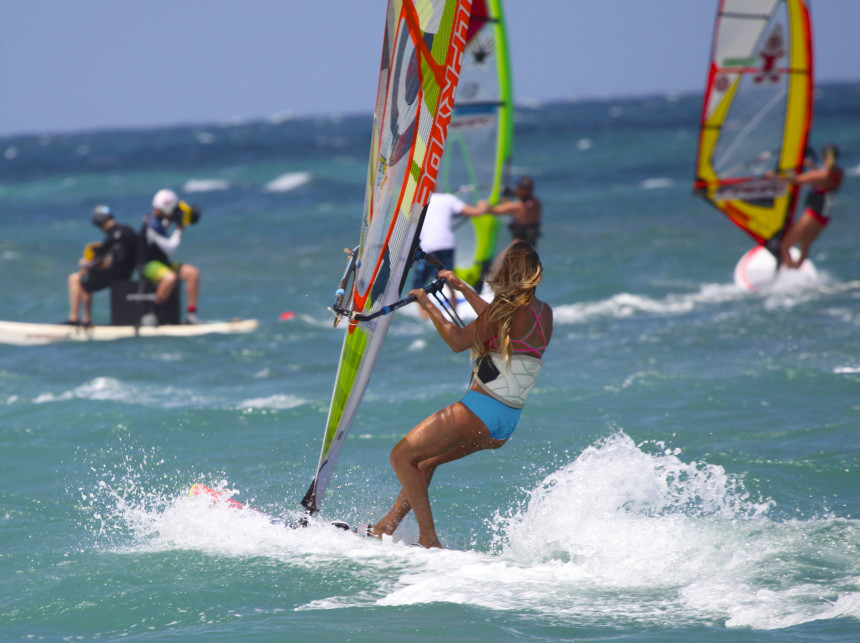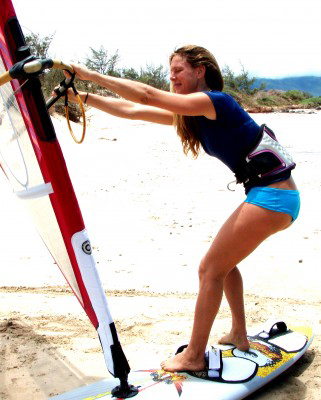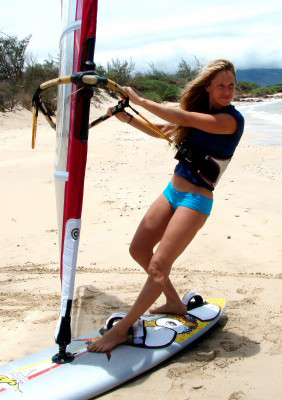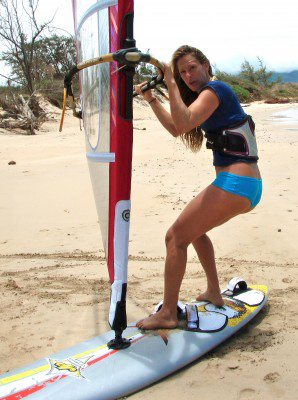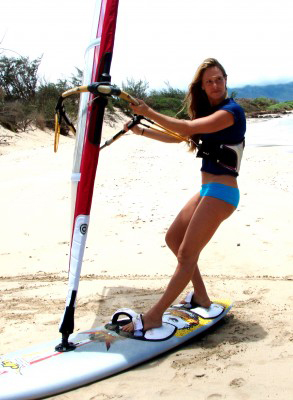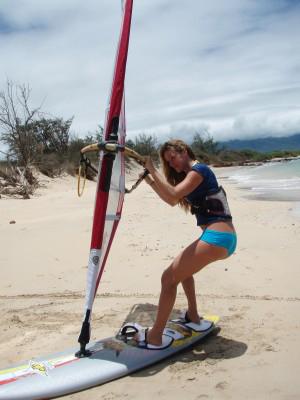Maui is already dreamy with it’s turquoise seas, swaying palm trees and a booming surf culture. Add the Four Seasons luxury accommodations into the mix and I think we’ve just gone to heaven. Waking up in Wailea’s calm south side beaches, breaking dawn with pastel colors, in our plush beds over looking the bay and the distant islands of Lanai and Kahoolawe was only the start of a perfect day. We were greeted each morning with a buffet of endless choices for breakfast, special juiced concoctions and stiff shots of coffee for those in need. By 8:15 we were all ready to hit the water with a bundle of hotel towels, beach chairs and gourmet packed lunches and surf gear on the racks. The windsurfing day started with Matt and Shawna going over all the safety issues with their guests, explaining the environment as well as going over the techniques of how to windsurfing first on the beach before entering the water. The gentle early morning breezes were perfect for all the beginners while Francisco got to enjoy windsurfing further off the shore where the winds funneled through the valley to create planning conditions for more advanced sailors. Under the shade of the trees we were able to set up our chairs and tuck into our lunches before heading out for a second session on the water.The fist day unravelled smoothly, like butter. Our guest were sun kissed, refreshed by Maui’s seas and ready to return to the hotel for some much appreciated relaxation. Some guest hit the Infinity Pool, others indulged in massages while a few just hit their rooms for a nap. Our group reconvened at 5pm to view the days video footage where Matt and Shawna were able to show their guest their best moments, fun shots as well as discuss how to improve other situations. Sunset cocktails were then enjoyed before dinner at a time where silhouetted palms trees waved goodnight to a blazing colored sky. We’d begin our evening meals under the blanket of a warm night sky. Guest had a choice to join Shawna and Matt for dinner or to have quiet meals on their own at any of the three stellar hotel restaurants. Ferraro’s Bar e Ristorante provides the best view of the sun dipping back ion the sea with delicious Italian food. Duo delivered a fantastic steaks, seafood and cozy atmosphere. Spago’s was a special notch of gourmet flash with one our very own Ho’okipa ripper, chef Peleg Miron coming out and explaining his meals before dazzling us with sizzling dishes. Stellar wines were poured and meals were devoured after full days of windsurfing, SUP and adventuring.
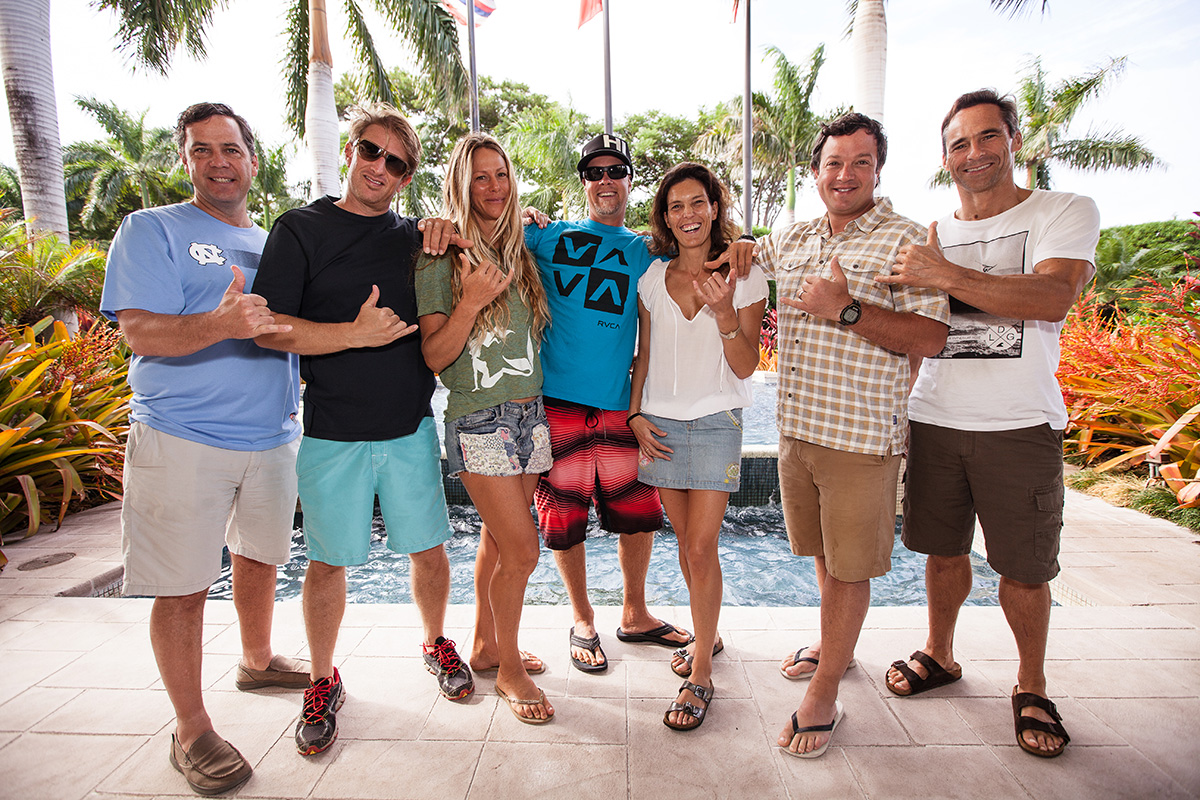

JAWS went off during our Four Season Unforgettable Event week. Jaws is one of the largest breaking waves in the world hitting up to 60 foot faces. The ‘Wave’ has made it on the cover of National Geographic’s as well as numerous other publications. Watching local heroes like Shane Dorian or Mark Healey launching themselves on to this skyscraper wall of water looking slightly larger than ants themselves is a once in a lifetime sight to see, especially from our private local perch on the cliff. That day was spent cruising through the north shores surf culture, weaving amongst surf board laden monster trucks, hair pin turns trimmed with jungly flora and fauna as well as mingling amongst local windsurf stars, local surf shops, cafes’ and their critters. Getting a taste of the true local Maui flavor is all part of holiday experience with Matt and Shawna.Besides windsurfing, we SUPed on knee high beginner waves in clear tropical waters surrounded by turtles. Our last night was celebrated in true style with a long table, many personal hilarious stories shared, a choice of meals and wine delivered in full ‘Four Seasons’ style. Pool races were enjoyed under stars, fountain puzzles found solutions, and early morning traditional canoe paddling was enjoyed to finish our last day along with one more large breakfast together before everyone caught different flights back home.
Shawn and Matt could not of conjured up a better dream team. All the guest were full of amazing experiences, life stories and humor. Everyone became closer friends after a holiday of immense action, pleasure, flavor sensations and beauty.
It was an ‘Unforgettable’ week.
[Photos by Adam Blakesley]
Testimonials
“This was truly an unforgettable experienced for both my wife and myself. I just can’t stop talking about it and there’s a permanent smile now on my face. Matt and Shawna are world class sailors and yet they are so accessible; highly skilled and yet so clear in translating that skill into something I could understand; patient and yet tremendously energetic to give me that extra push. And all of it wrapped around in boatloads of fun and interesting bits about life in Maui and the life of a windsurfer. The visits to Jaws and to the workshops where top of the line sails and boards are made in Haiku, were things that any 5 to 85 year old kid hooked ON water sports would drool about. And you can see the respect that Shawna and Matt garner from their peers. I am looking forward to doing it again. And next time, it won’t be just my wife, the kids are coming too!”
Francisco R. Rey
Corporate Finance – Global Head
BBVA Corporate and Investment Banking
"It was an absolute joy spending time with Shawna and Matt, as well as the great personalities that were attracted to this debut effort between Aloha Windsurfing Clinic and Four Seasons. In my relatively new world (two kids, what feels like 4 full time jobs, etc.) I’d been feeling like I recently “lost” what was so special about living in Hawaii. To be so close to my home (a little further beyond the Au‘au Channel) and be “treated” to 4 days in the water was just a dream. Add meeting Francisco and Monica, David and Mark, you two and Thomas and Adam… just awesome. I appreciate the opportunity to make these new friends. I look forward to seeing you all again. Perhaps in Spain! Much aloha."
Brian Berusch
Publisher, Hawaii Polo Life
B on Hawaii media services and consulting
Principal, Story House Hawaii productions
"On a rainy San Francisco morning I am still basking in the afterglow of an amazing trip to Maui. Shawna and Matt, thanks for creating an incredible trip and to all of you for creating some lifetime memories!
I look forward to seeing you all on the water! Cheers."
Mark Blake

